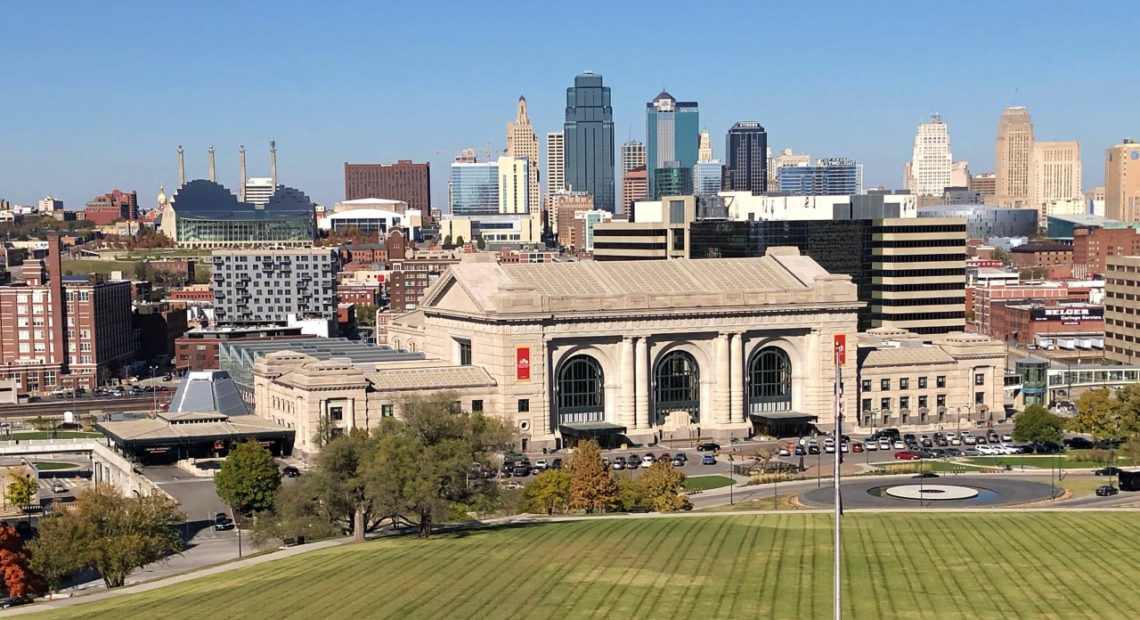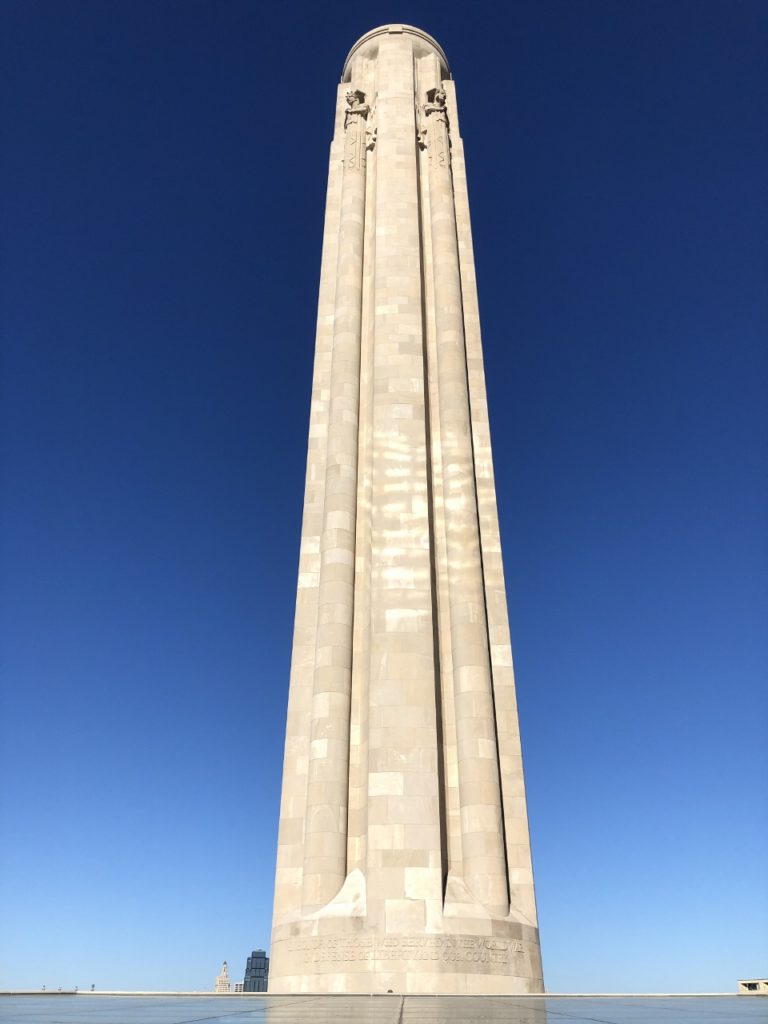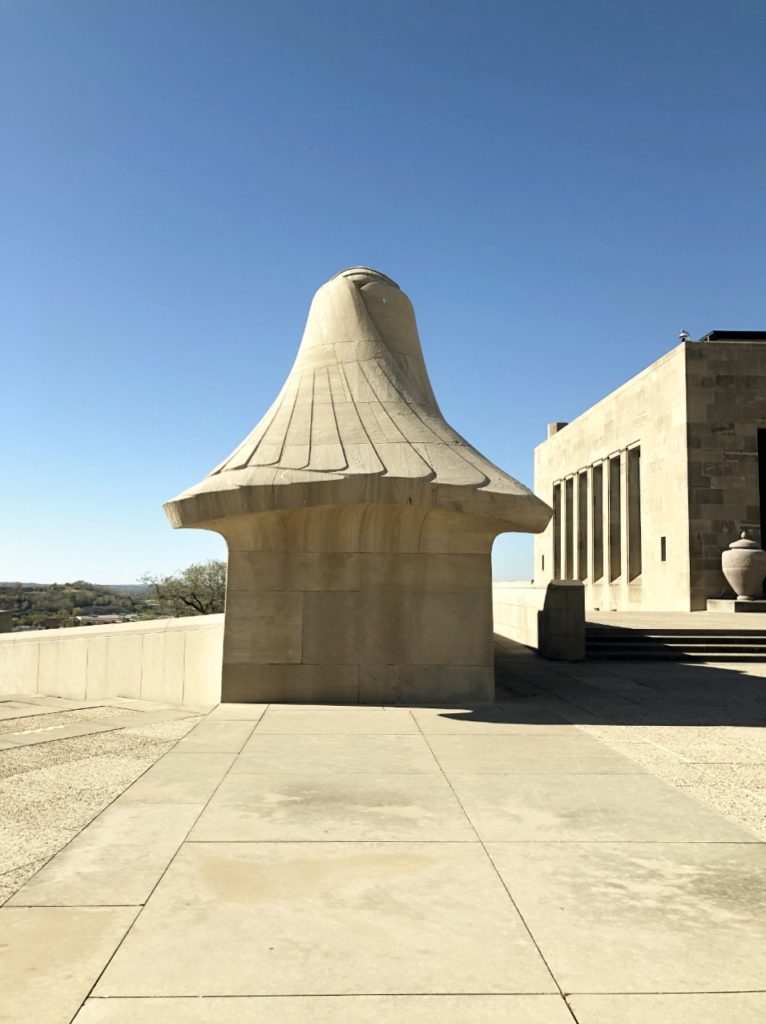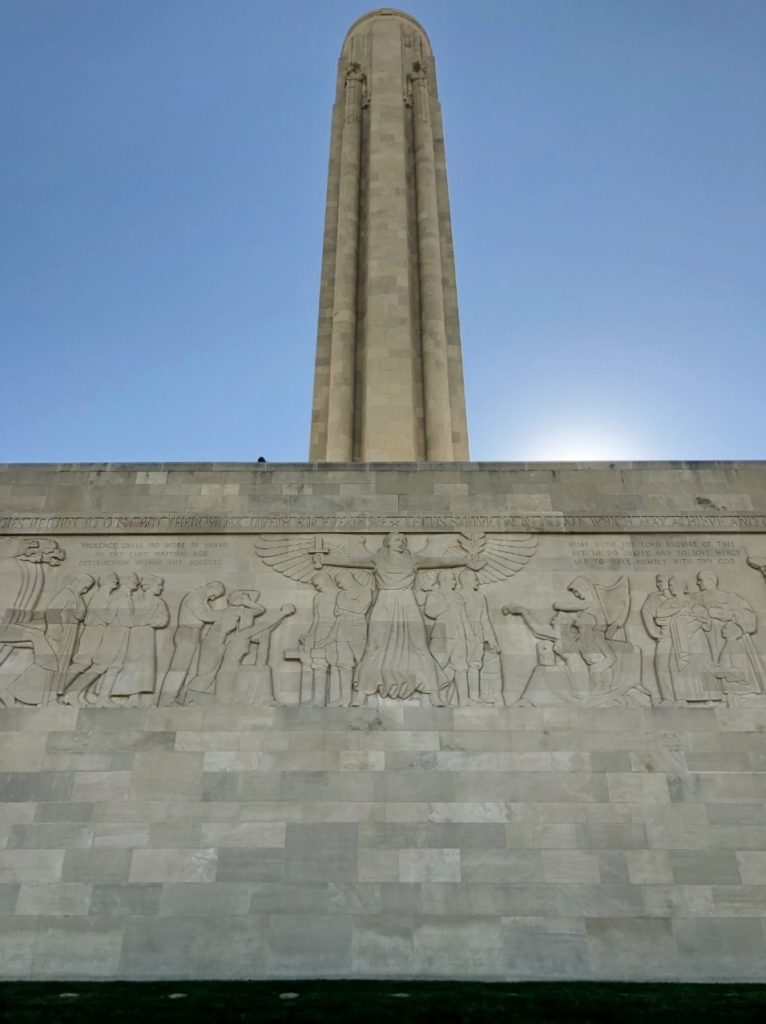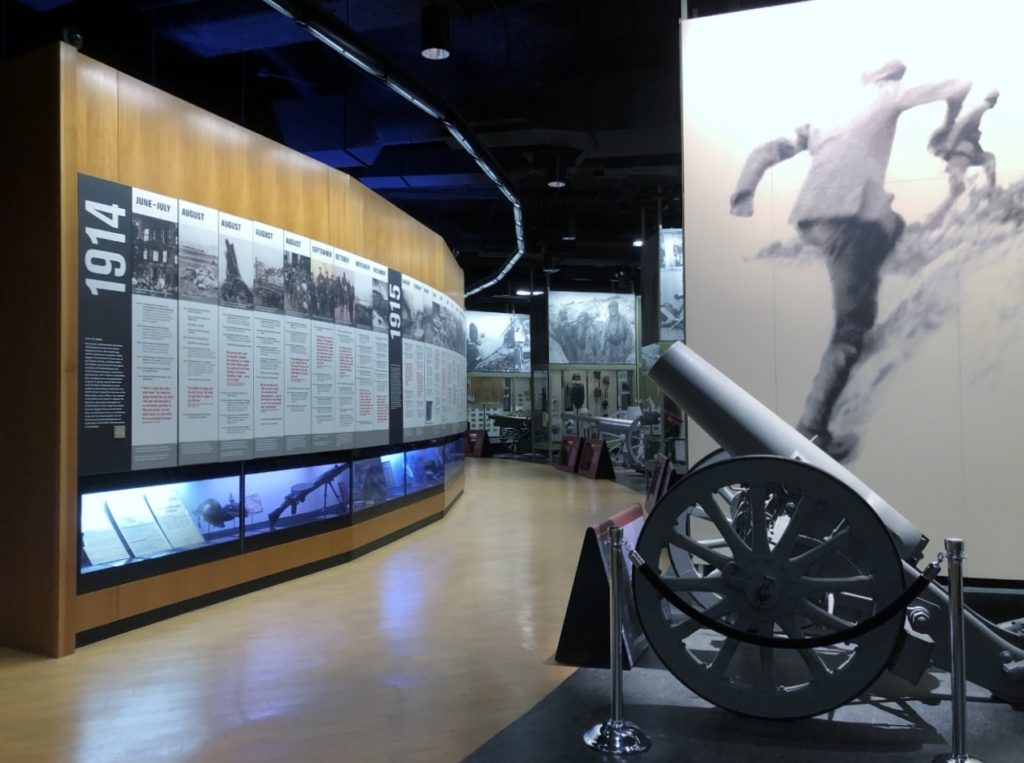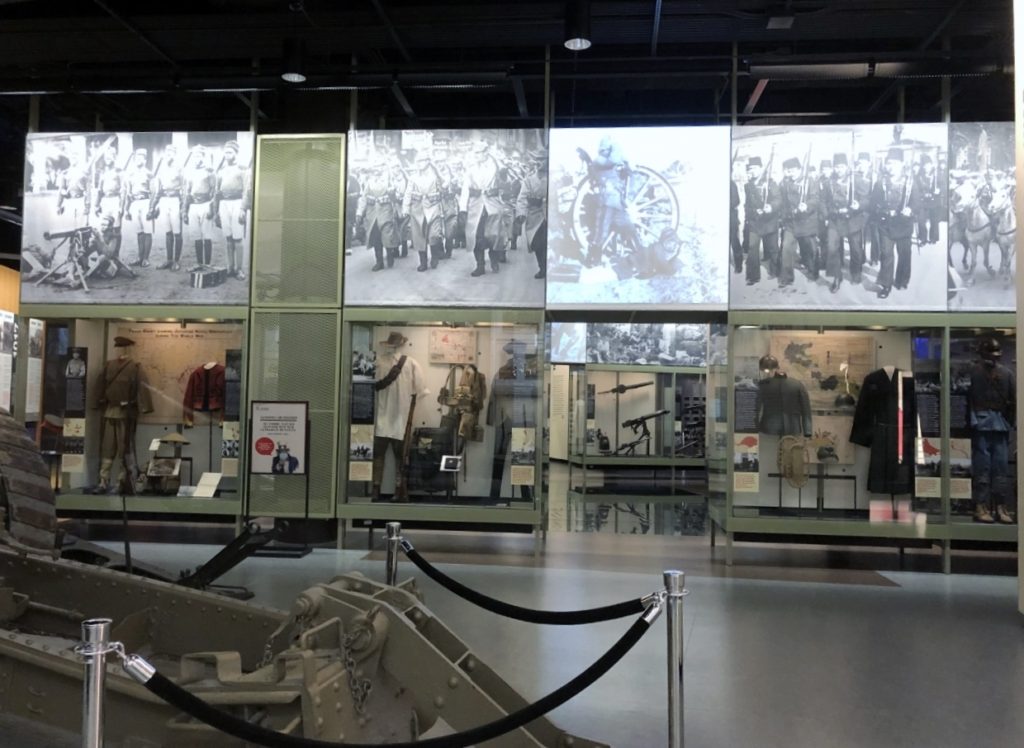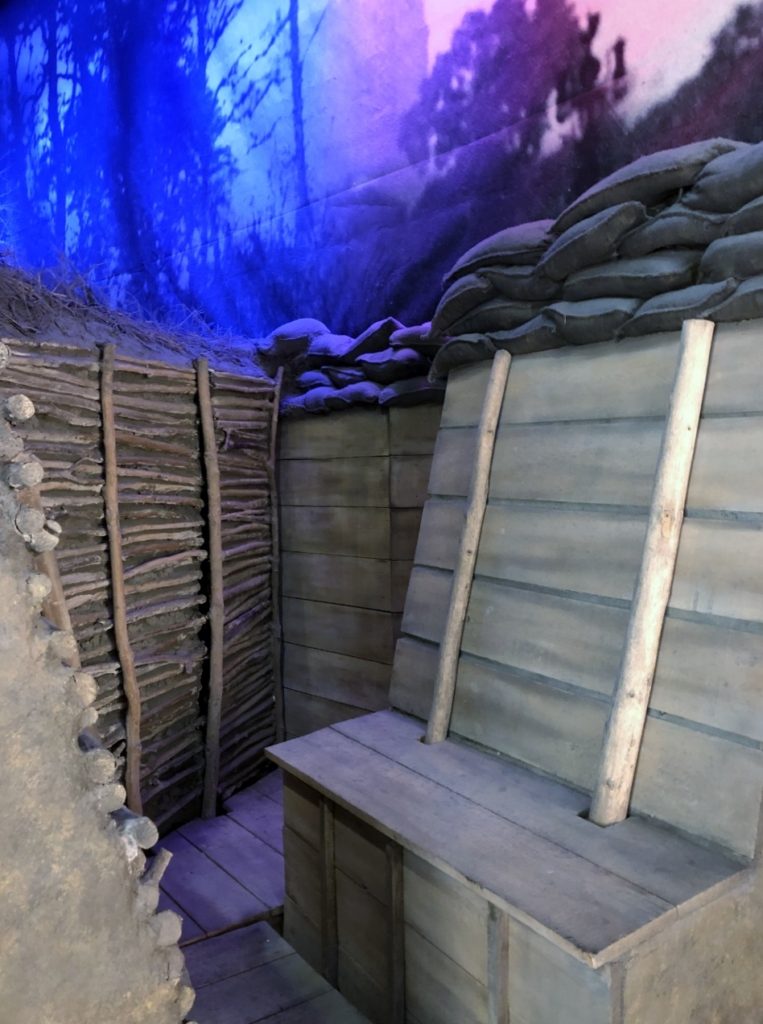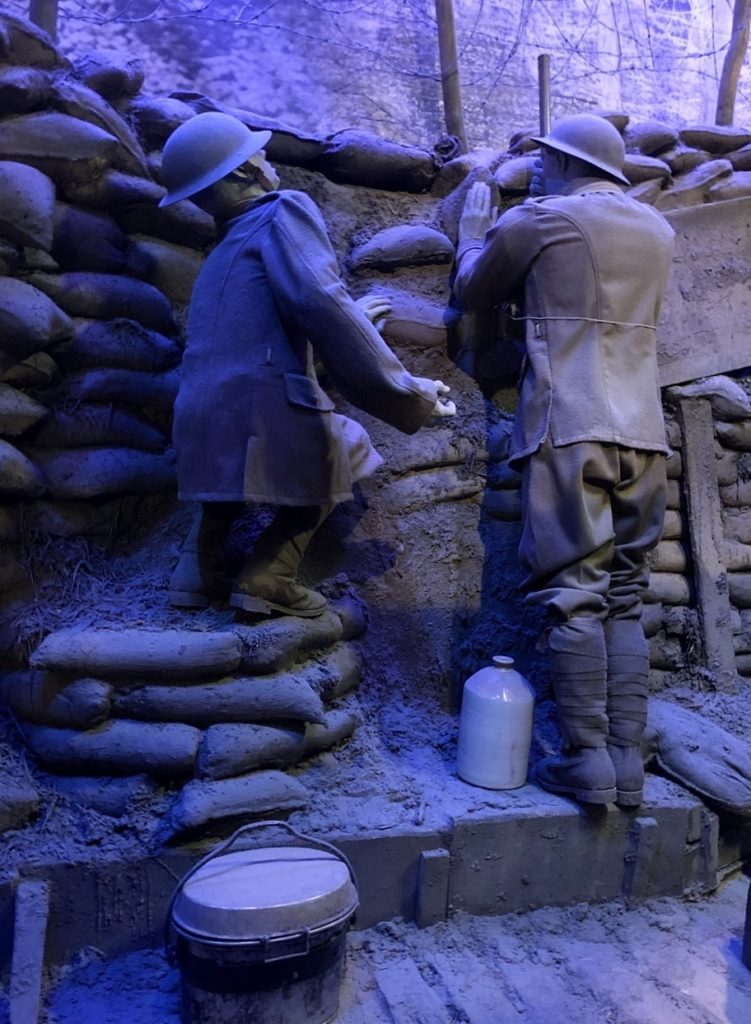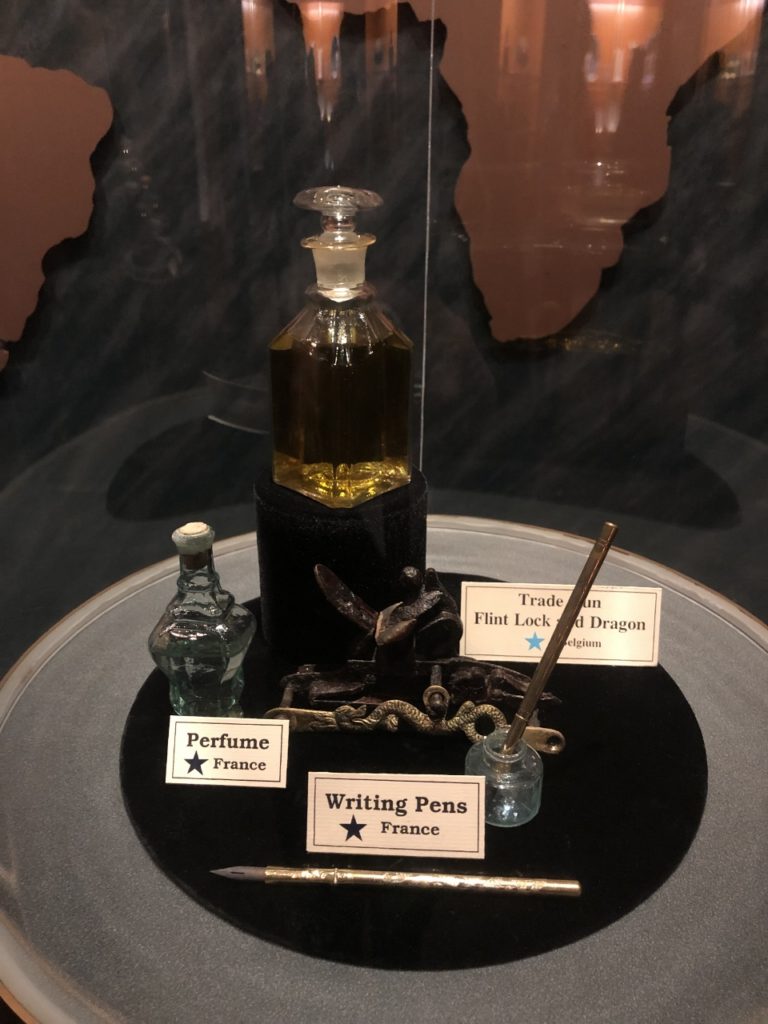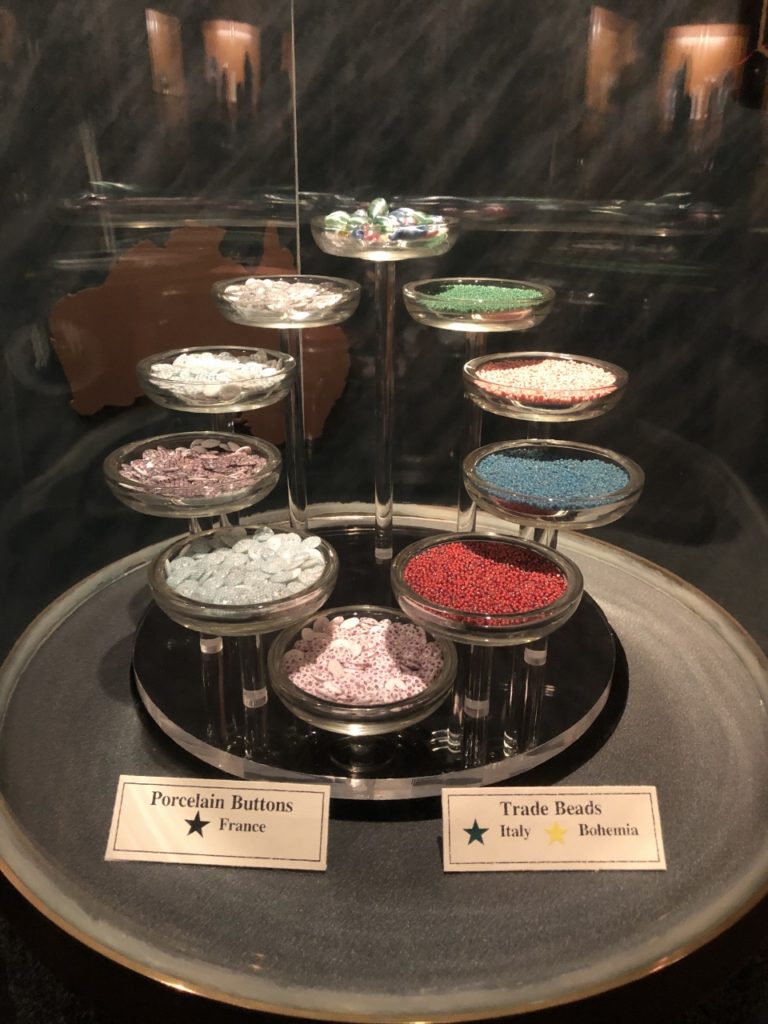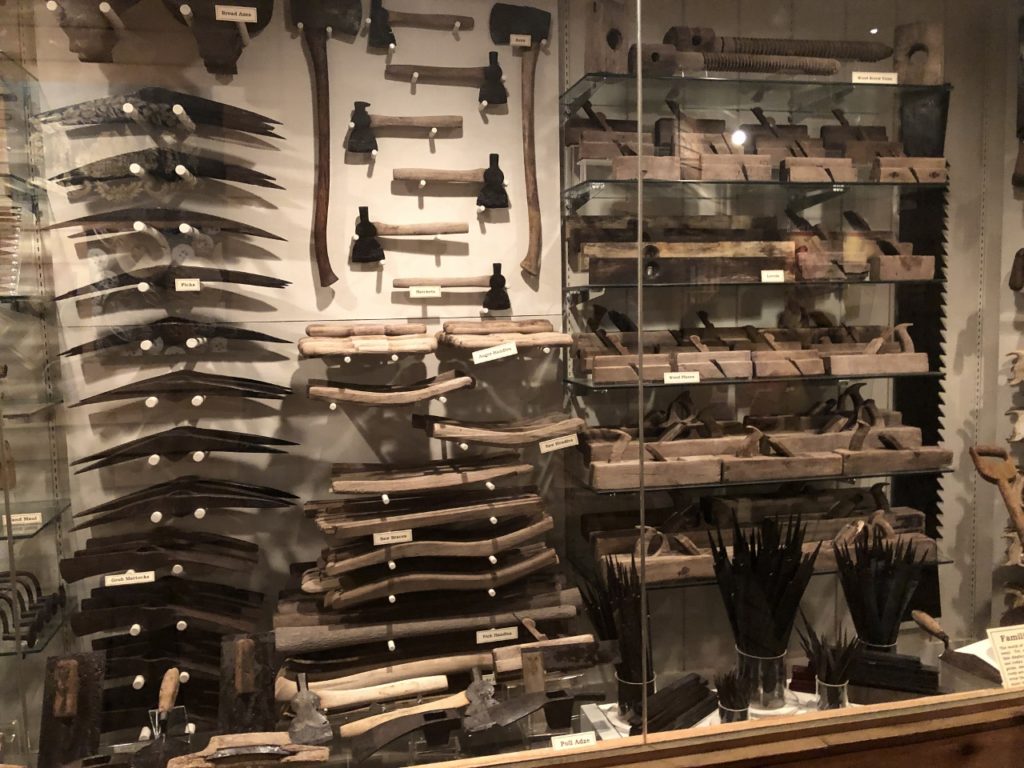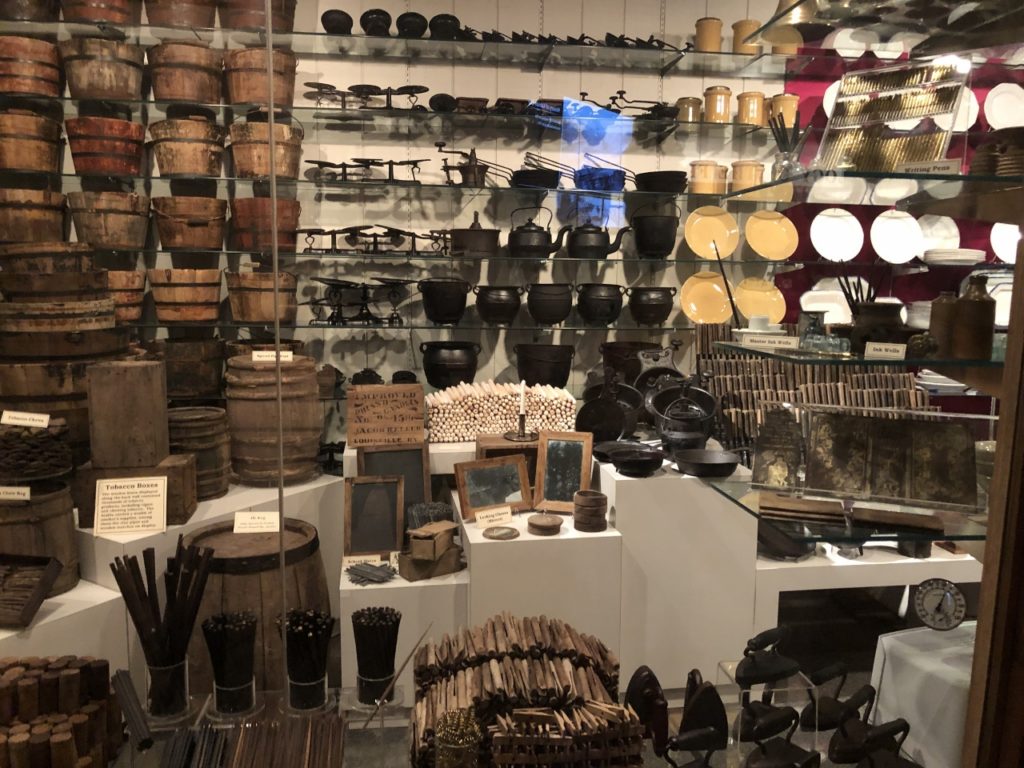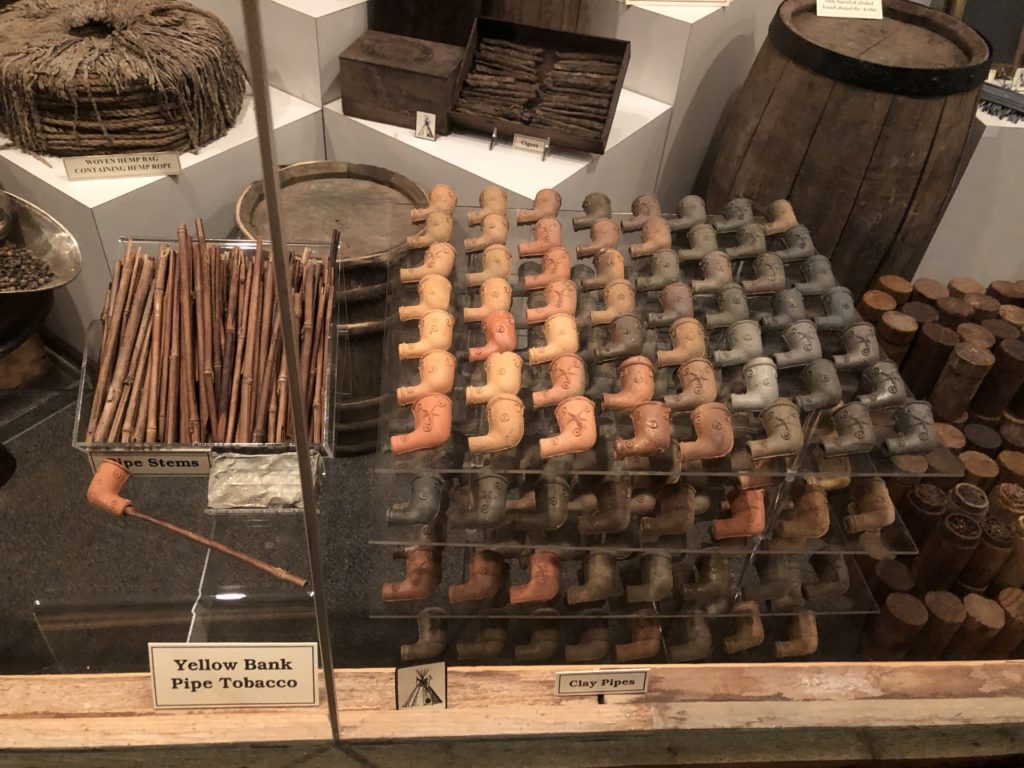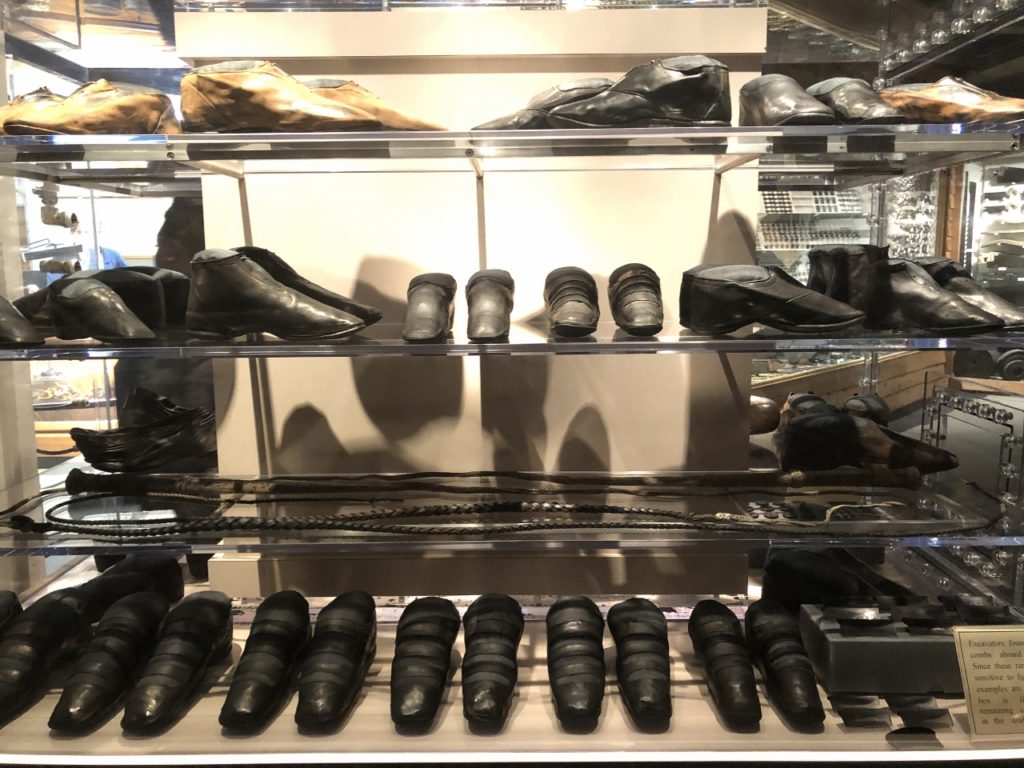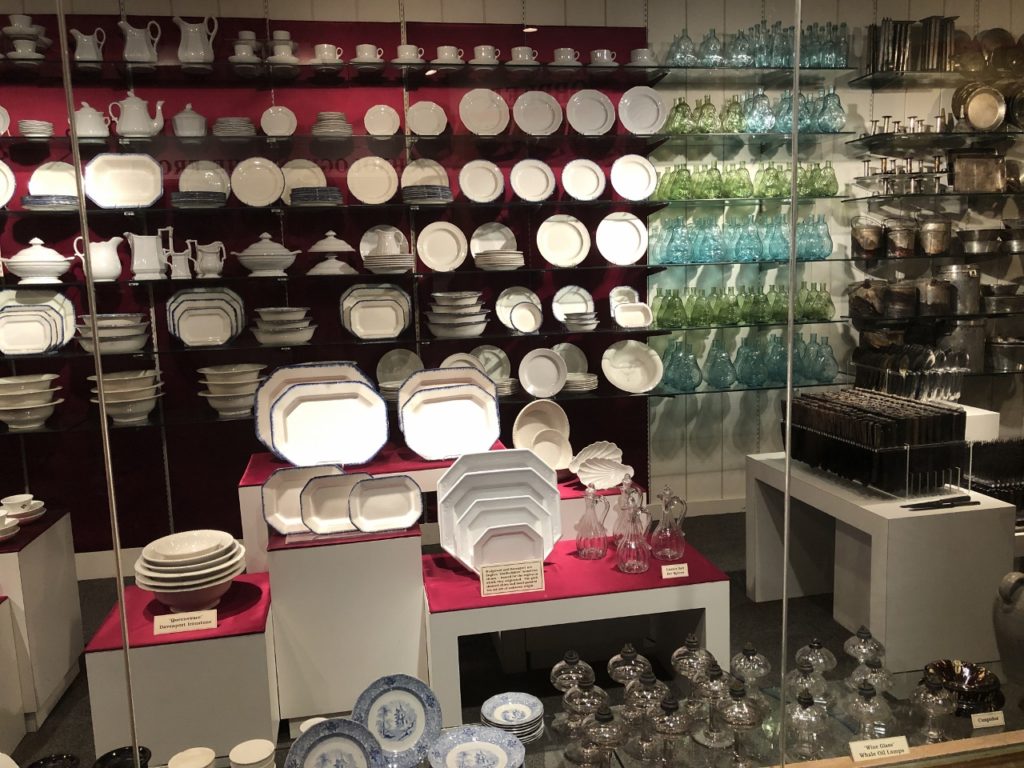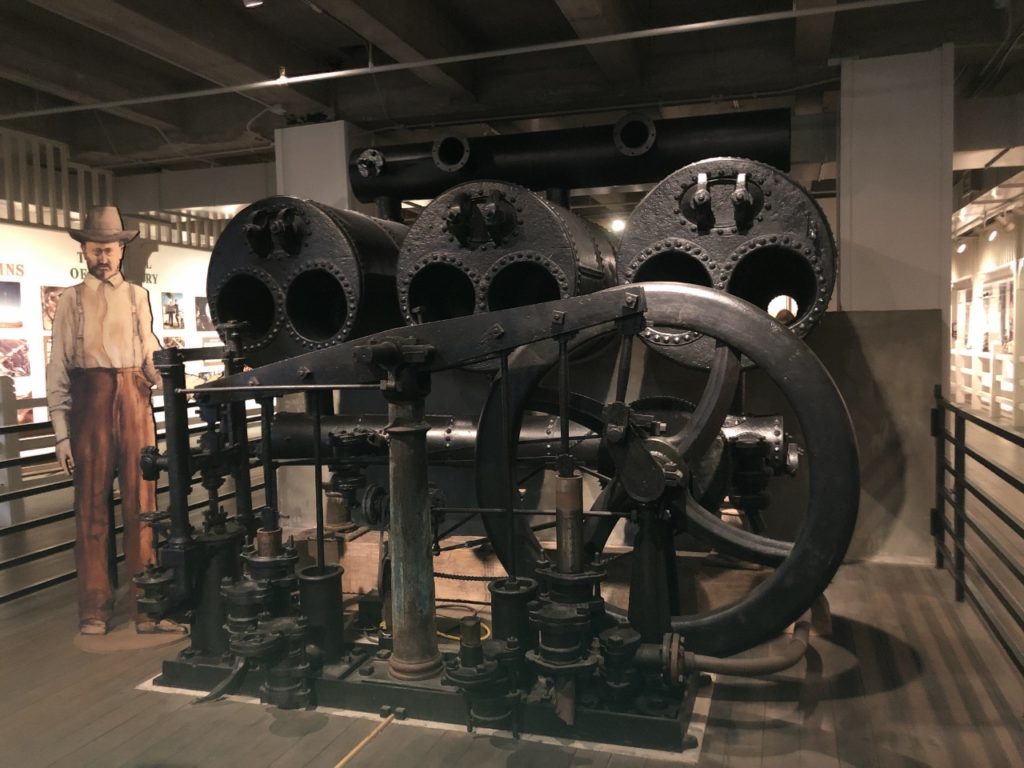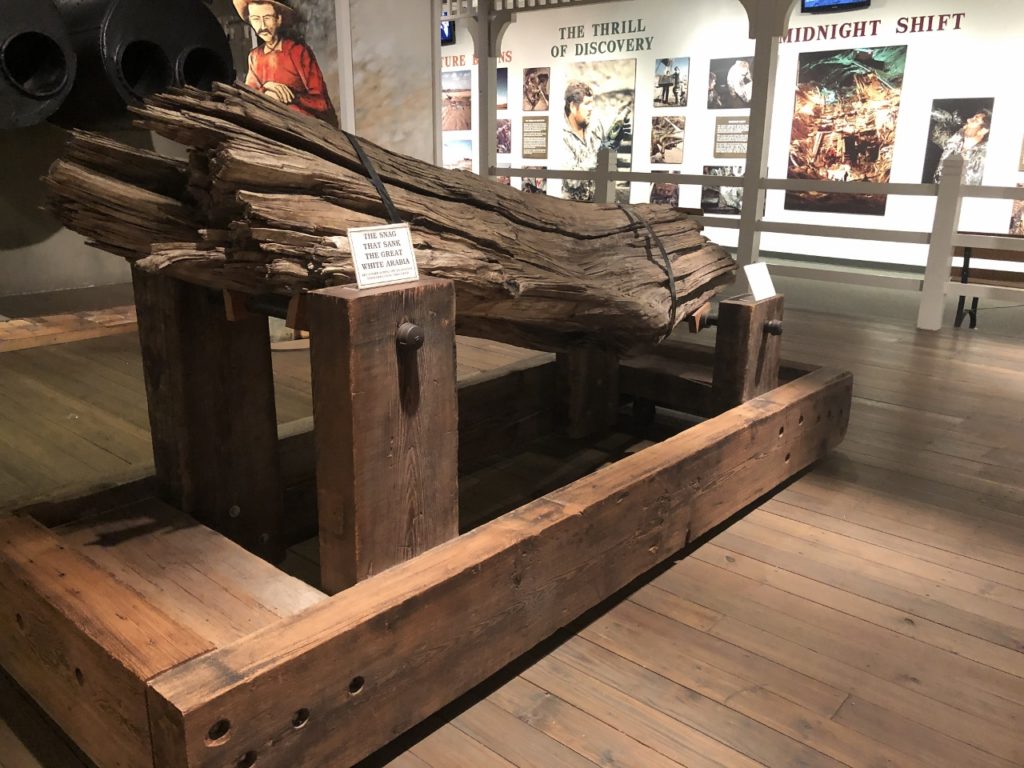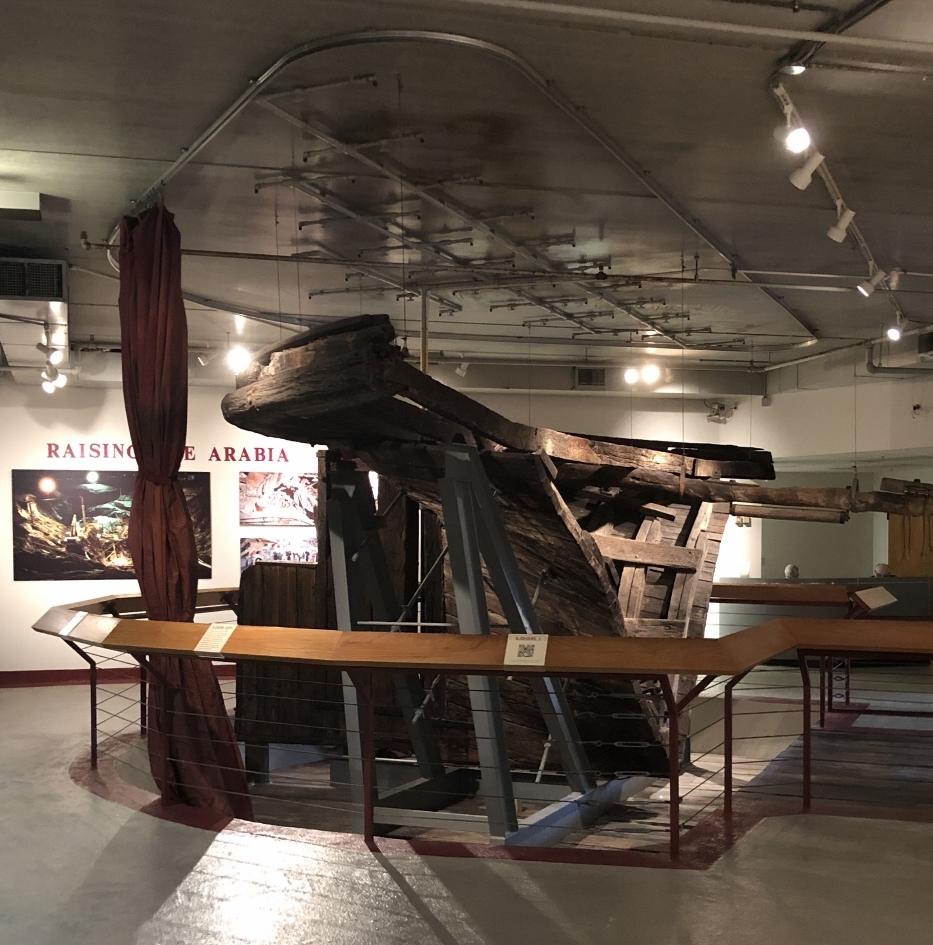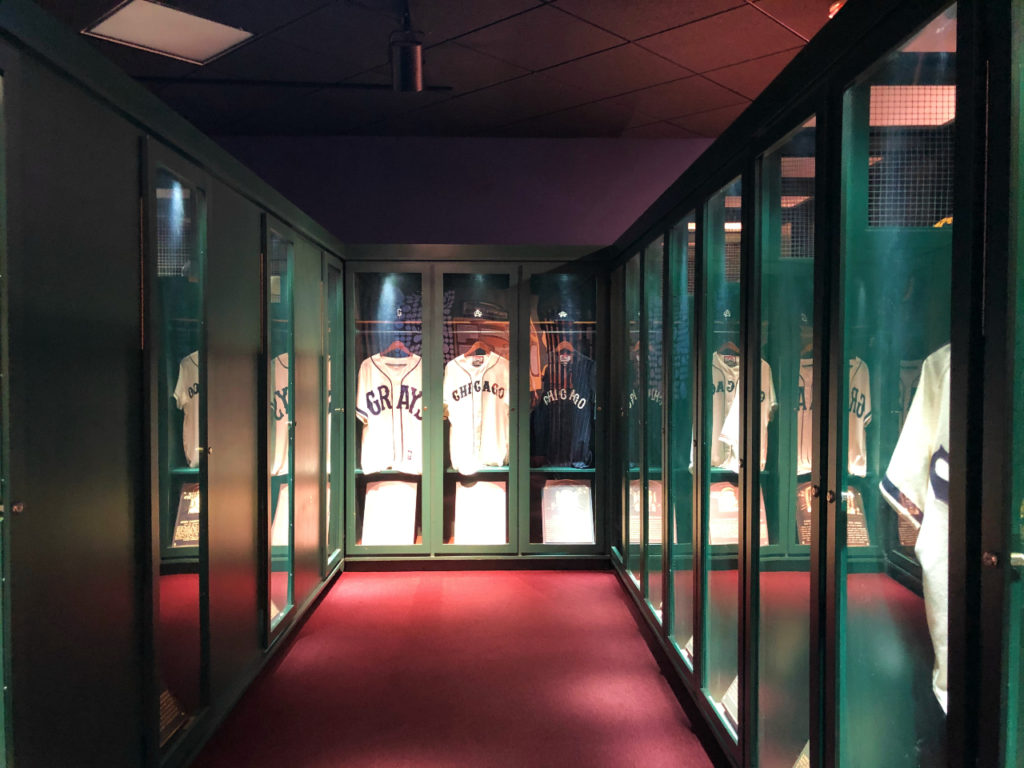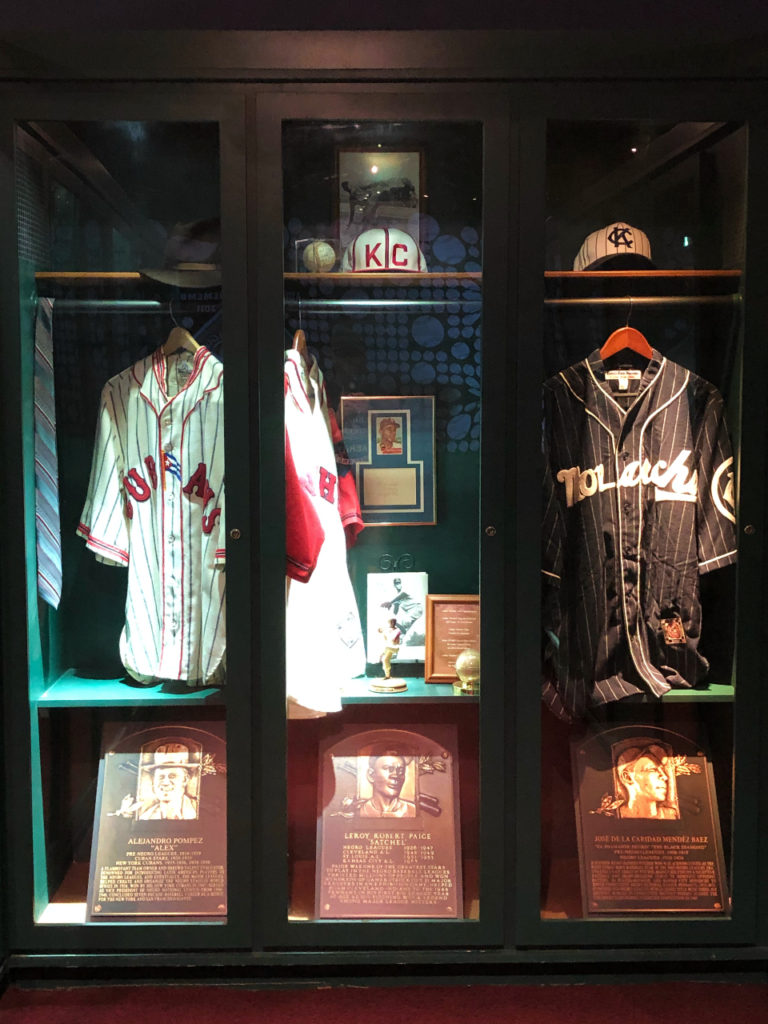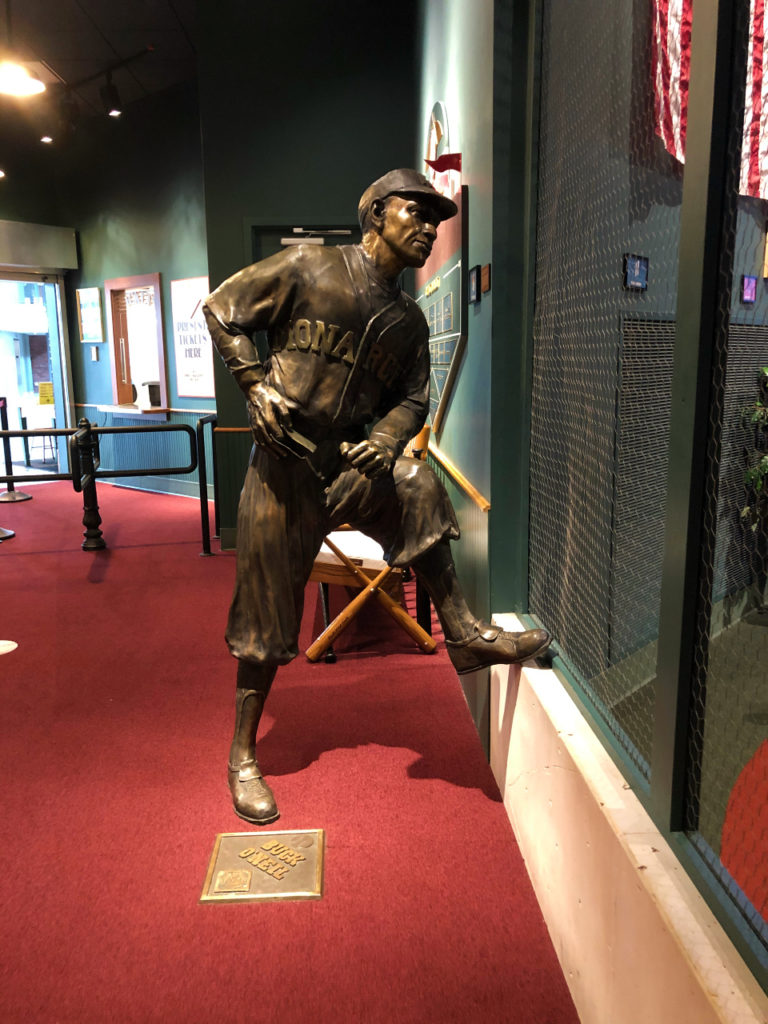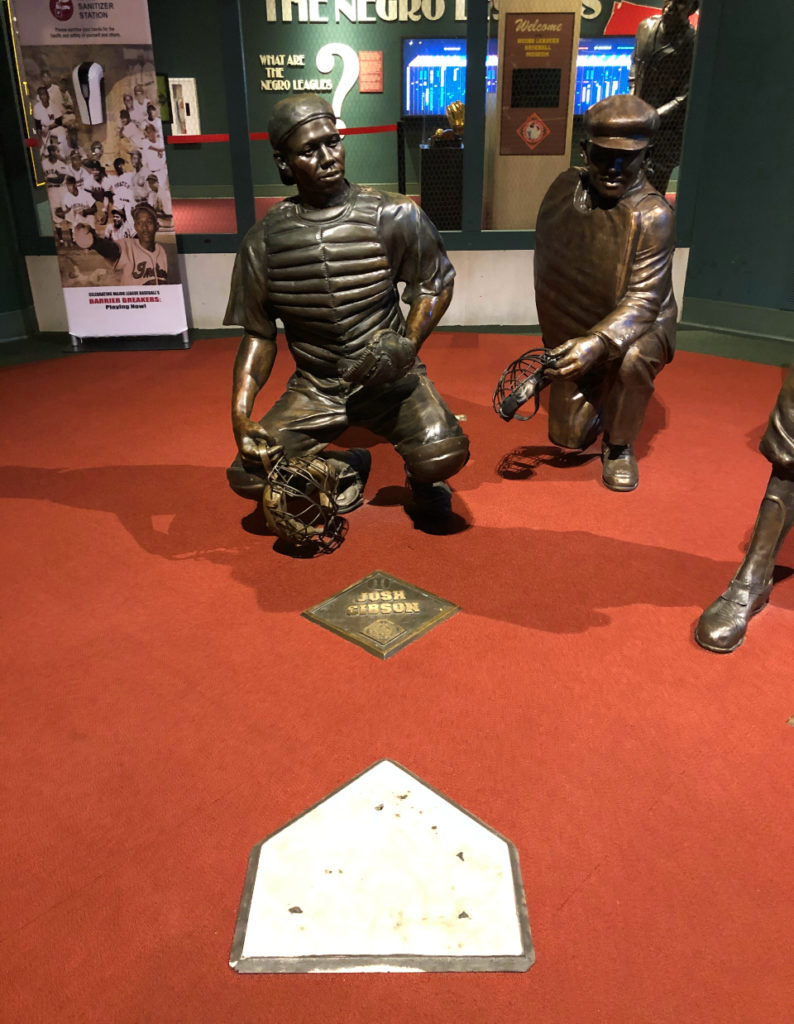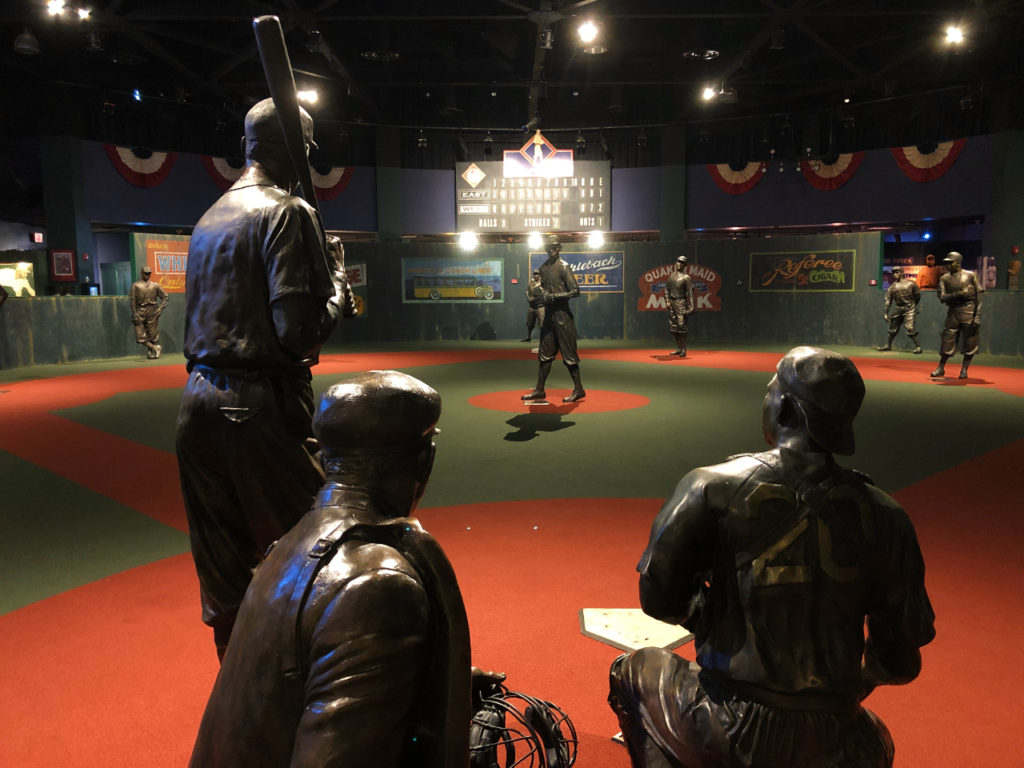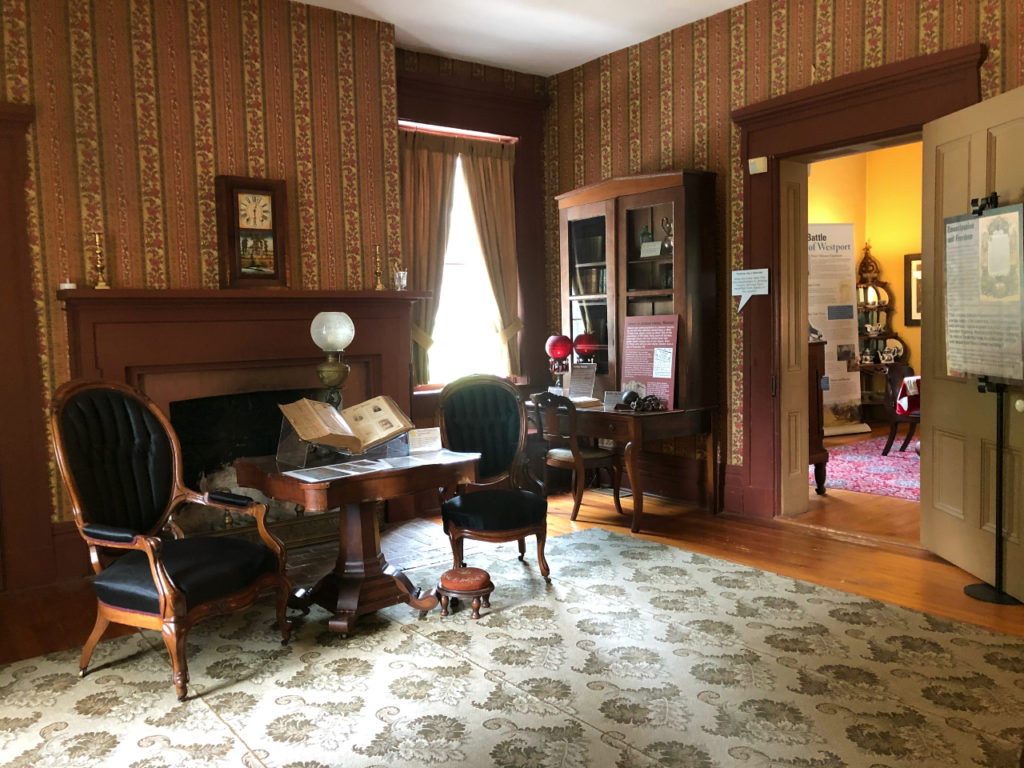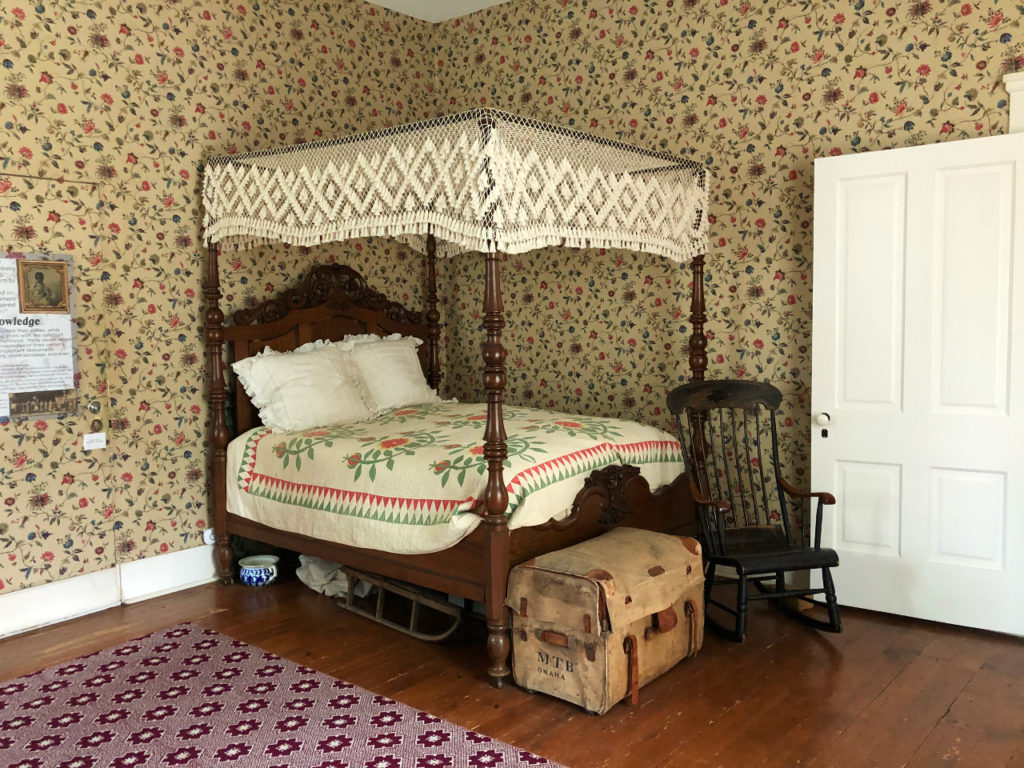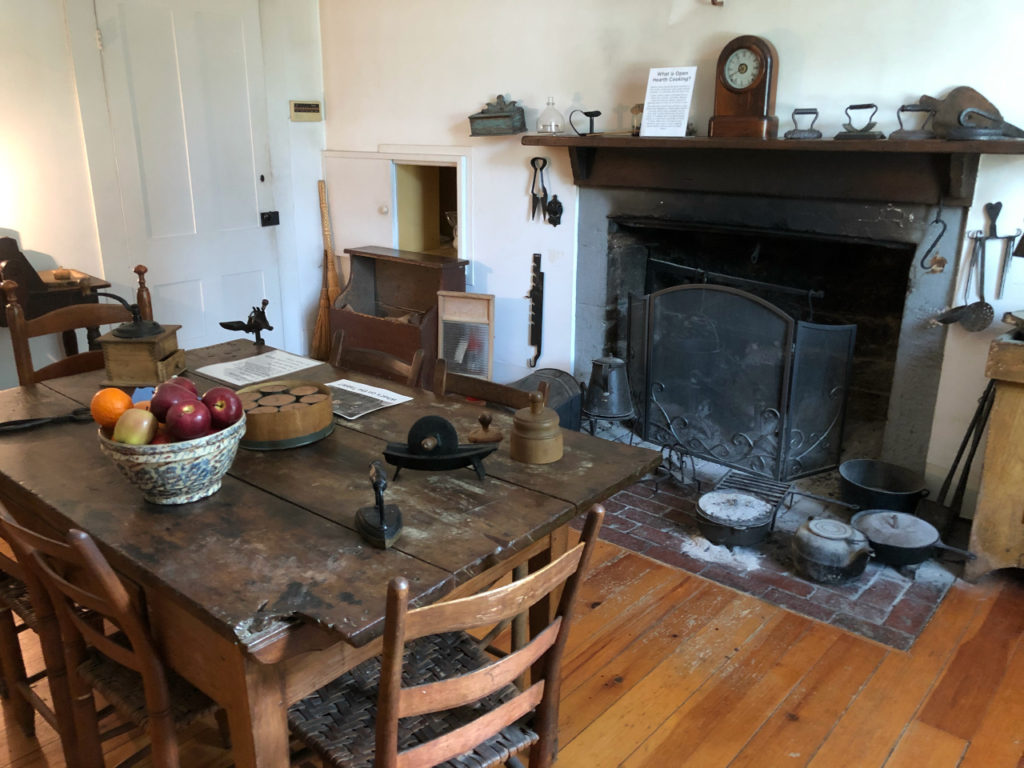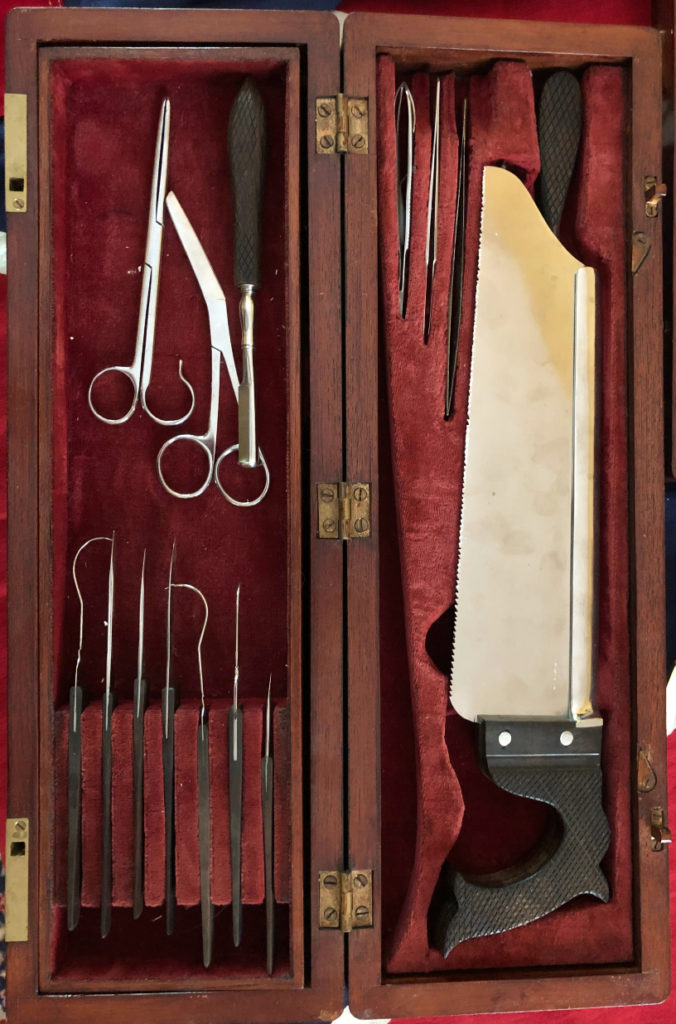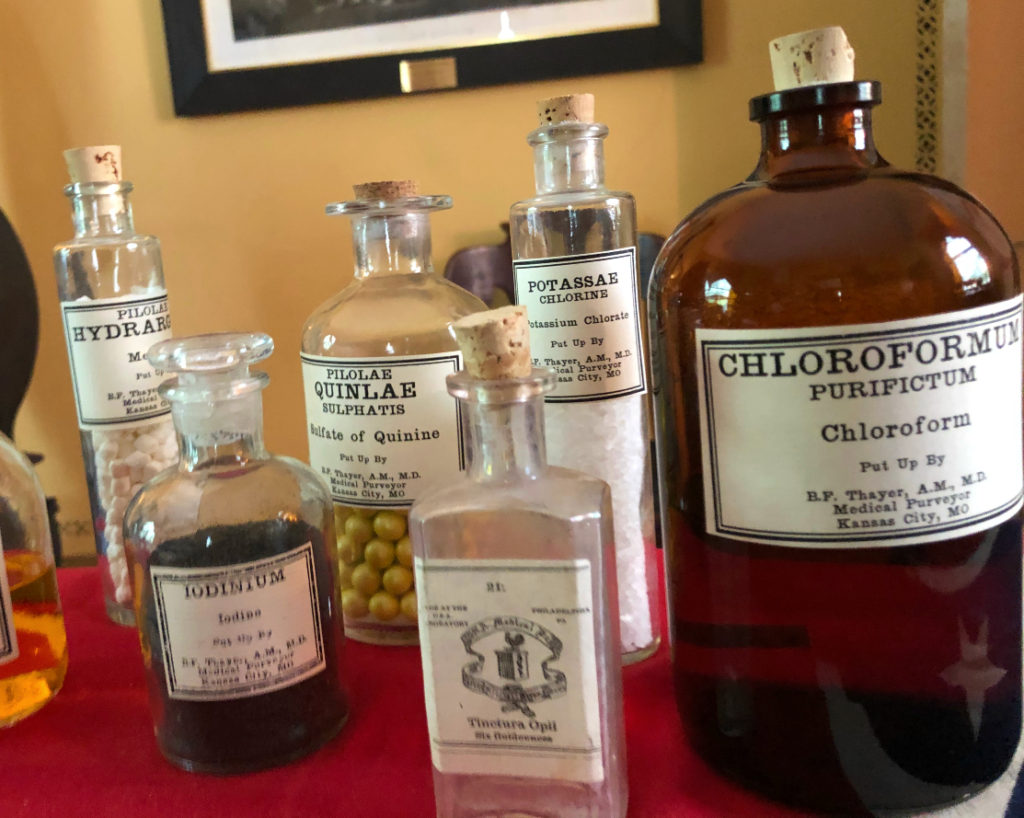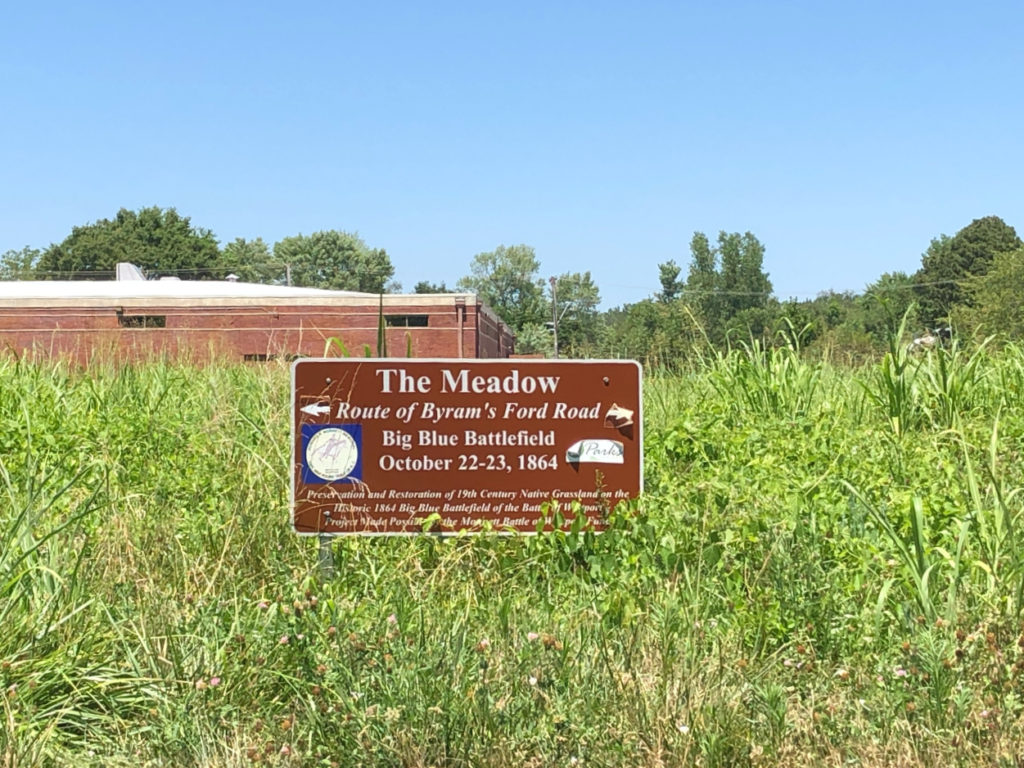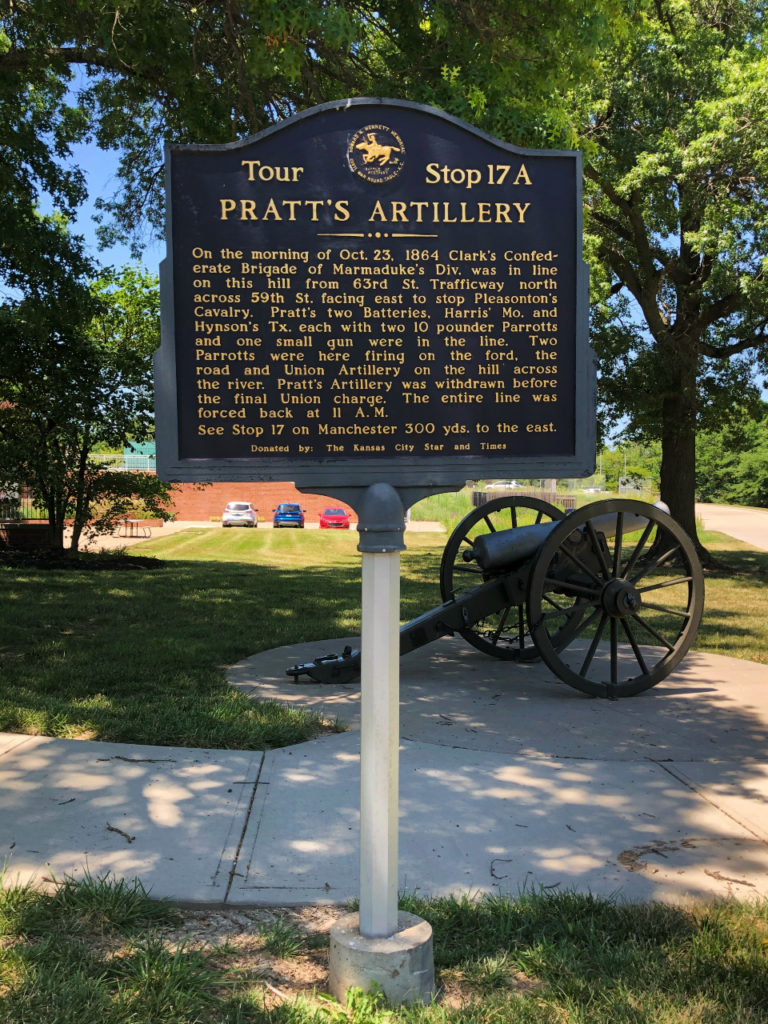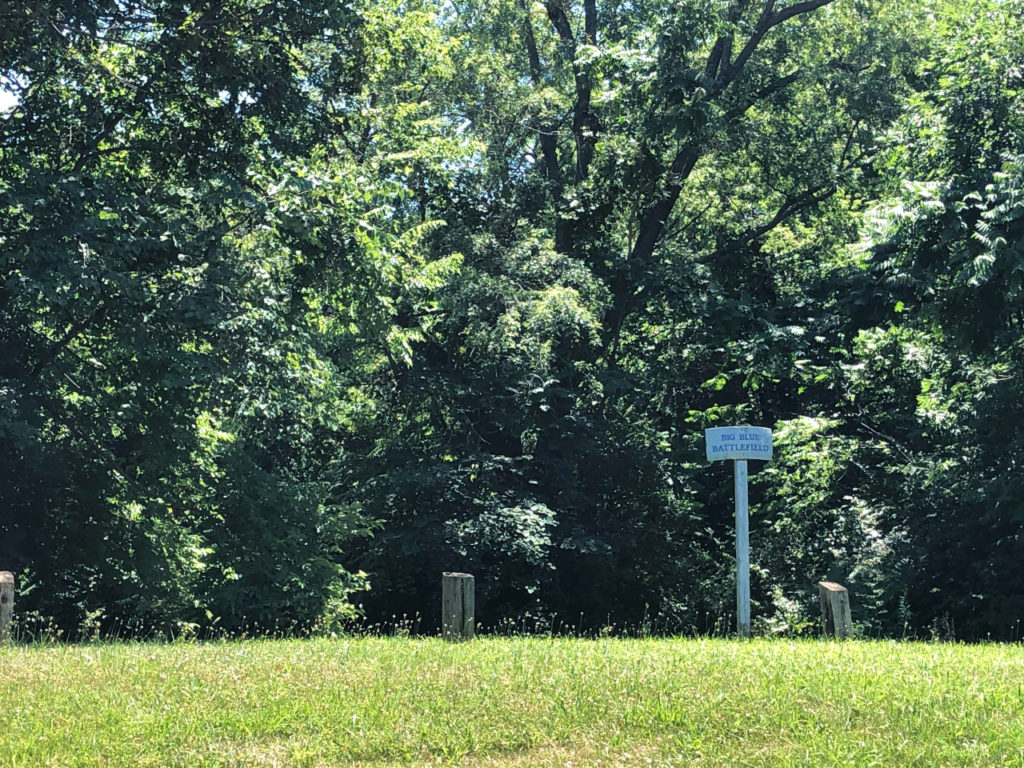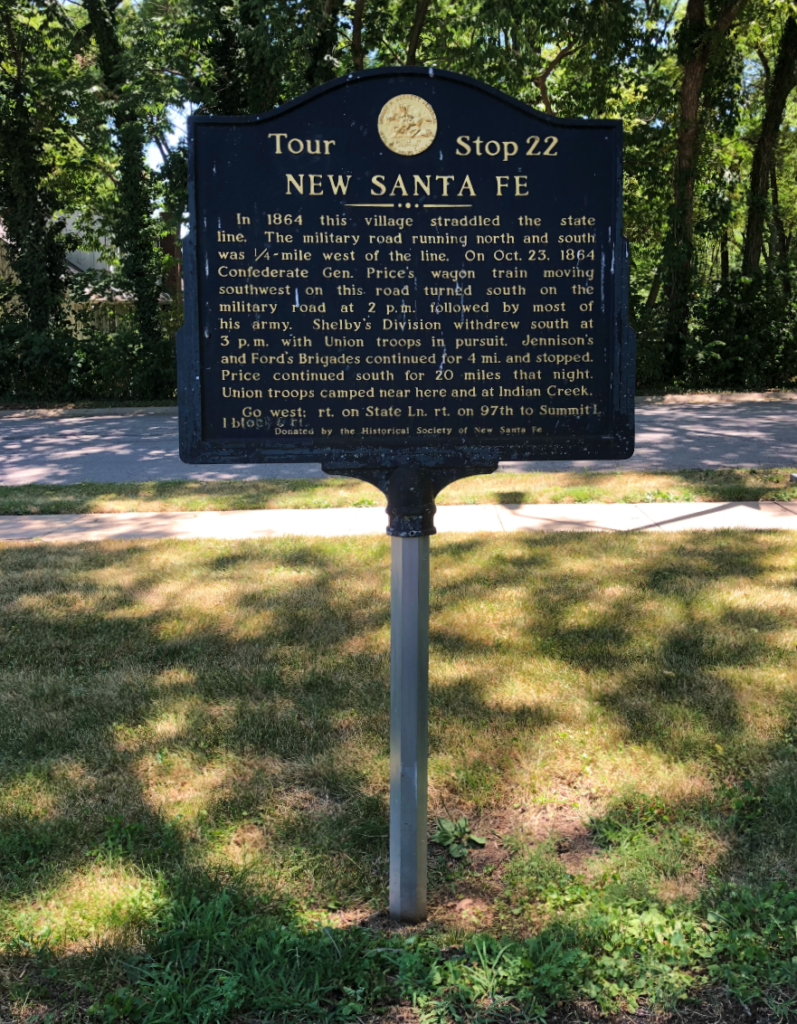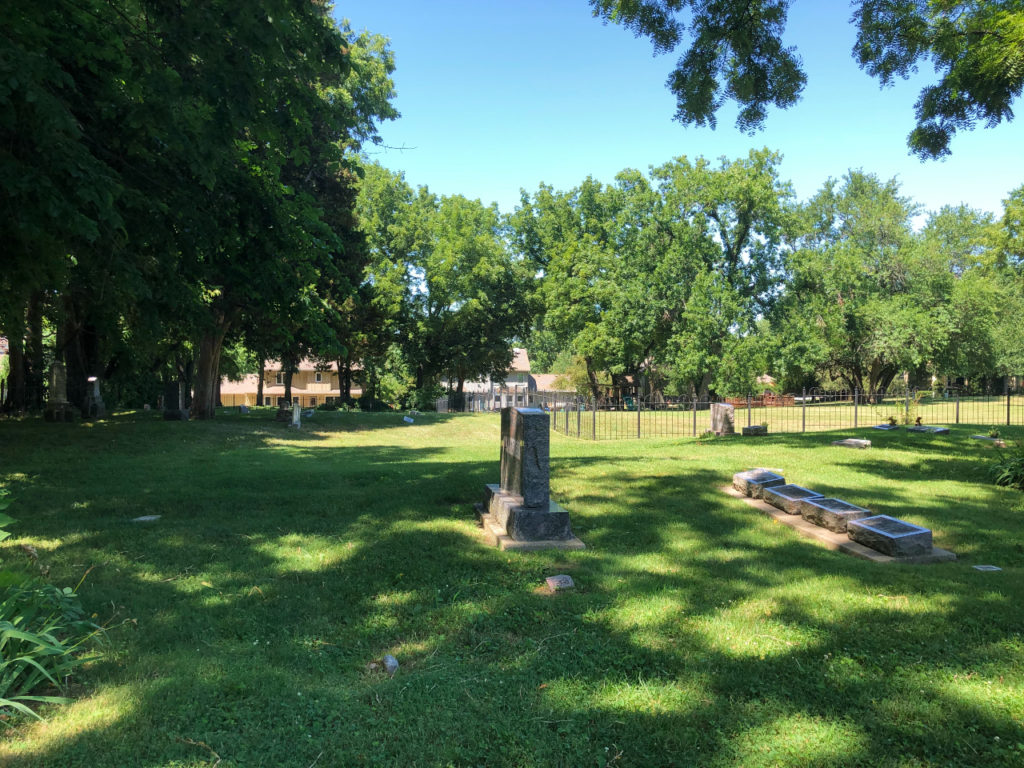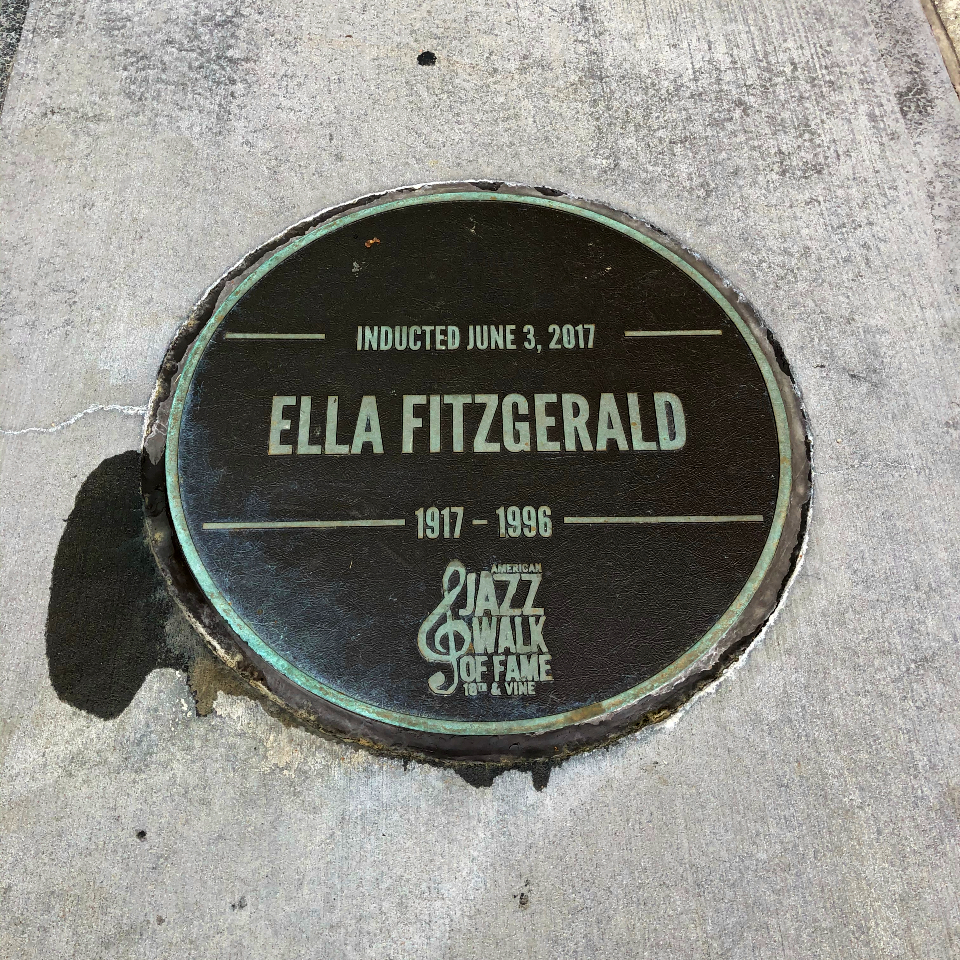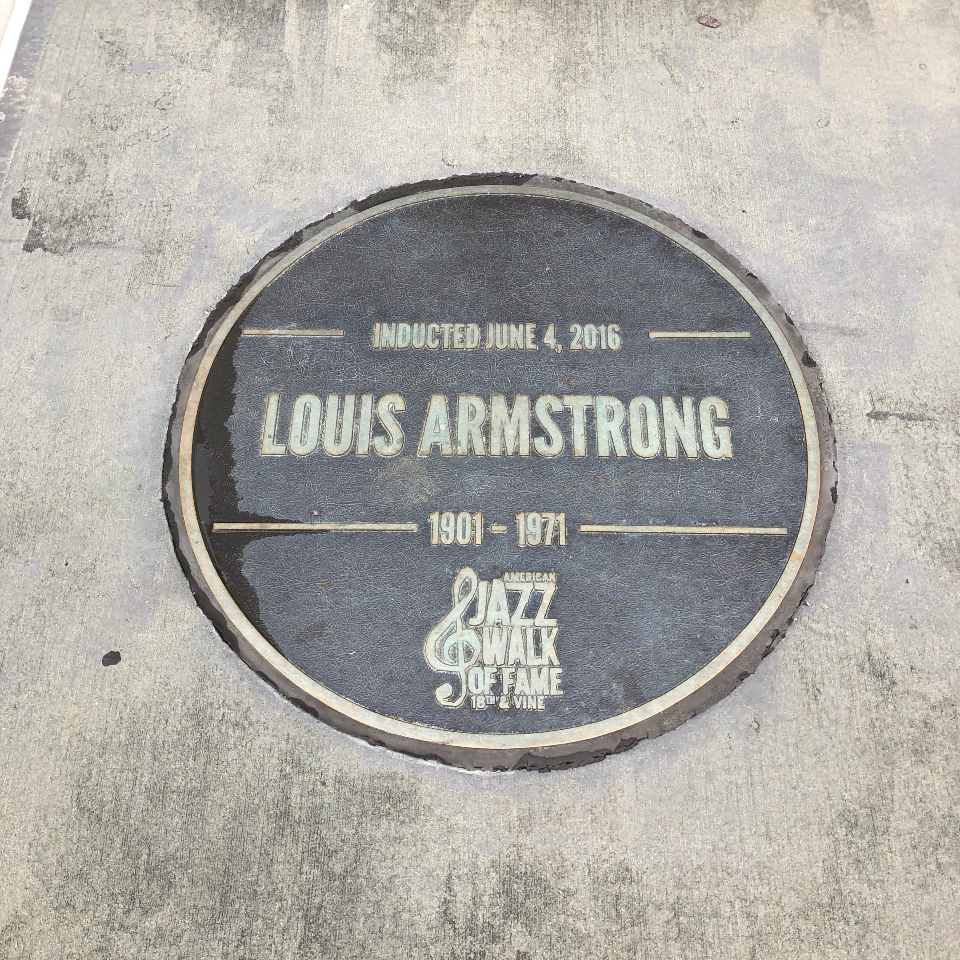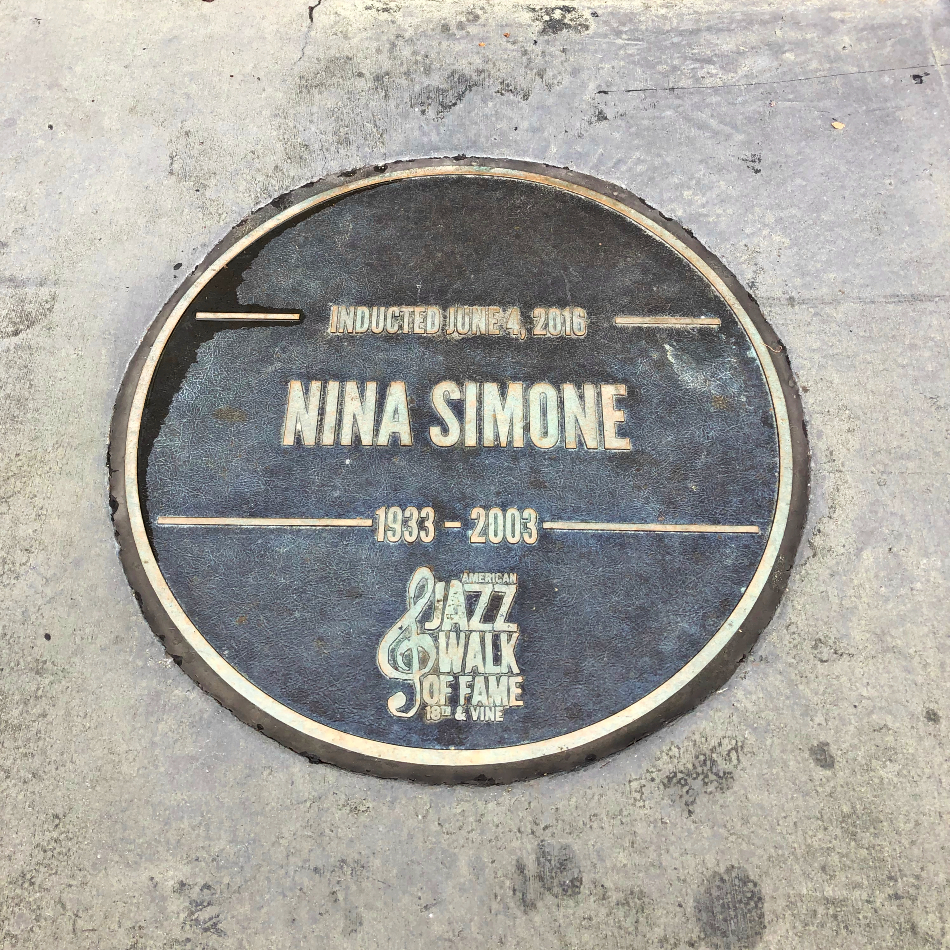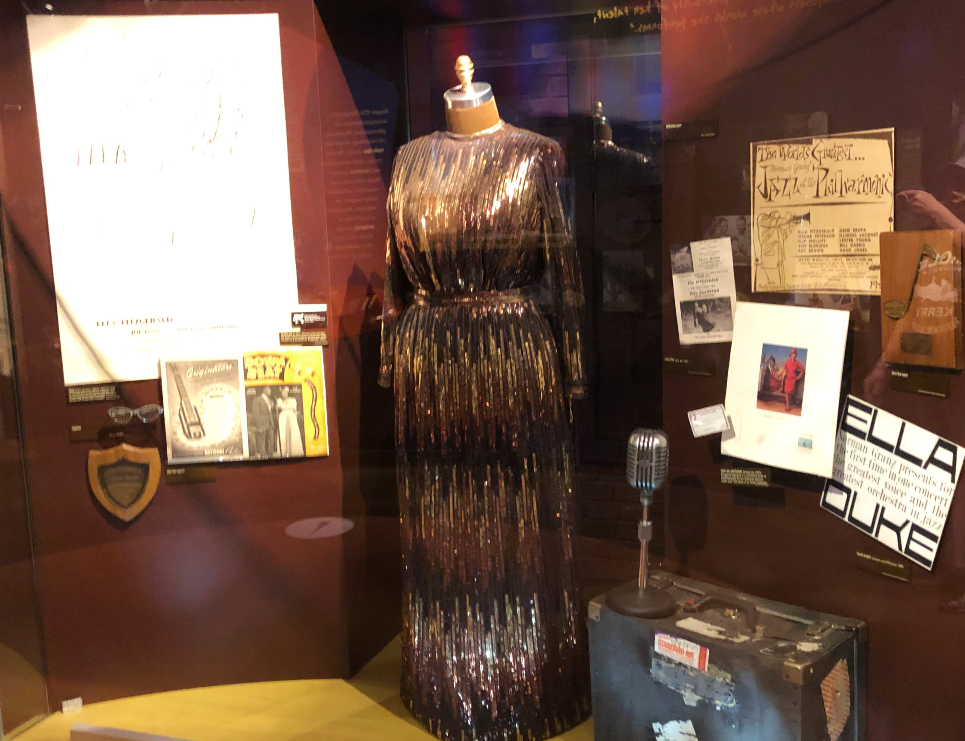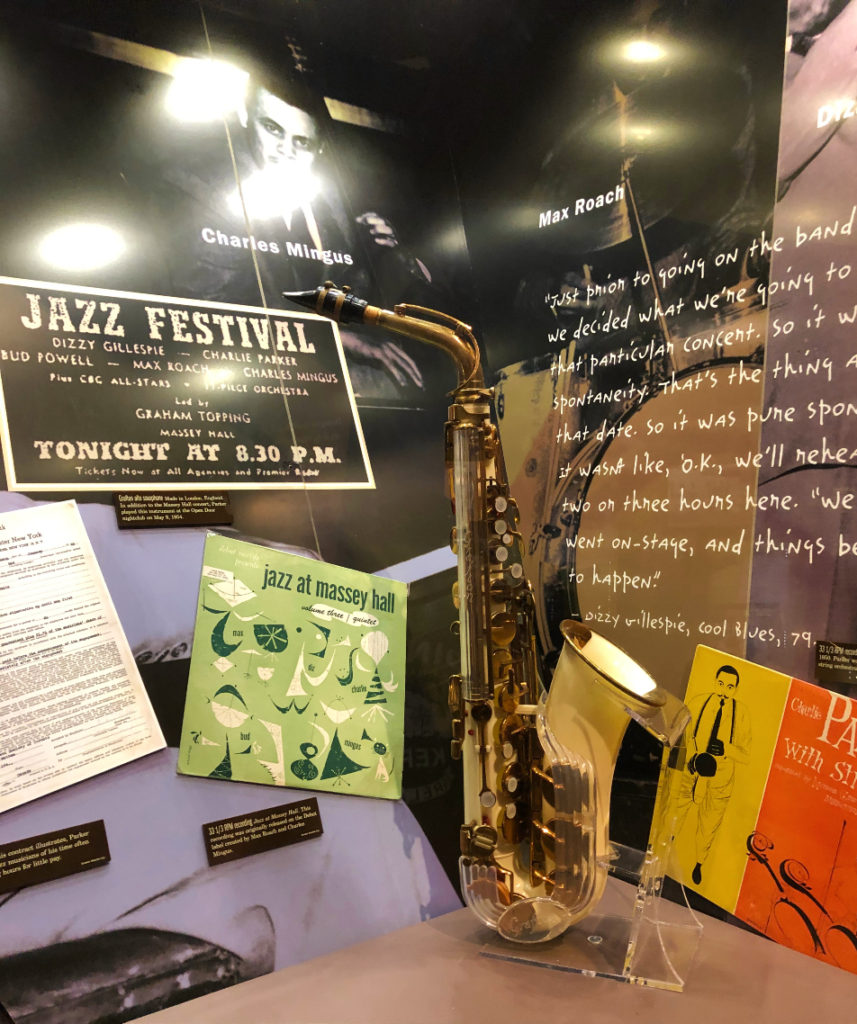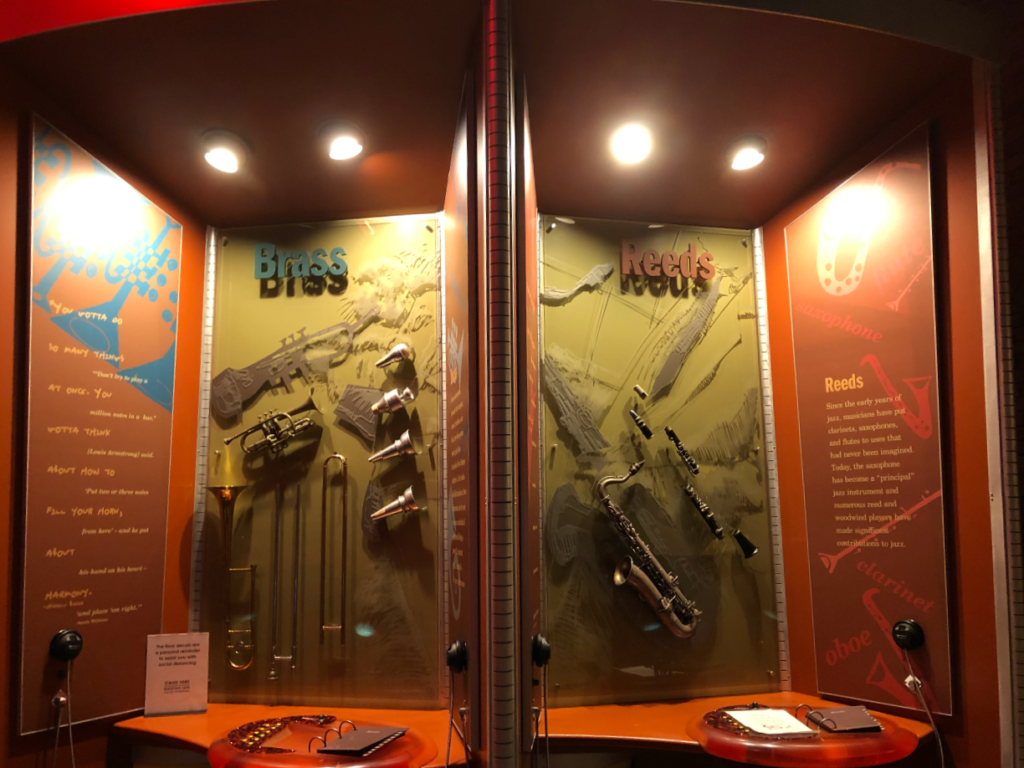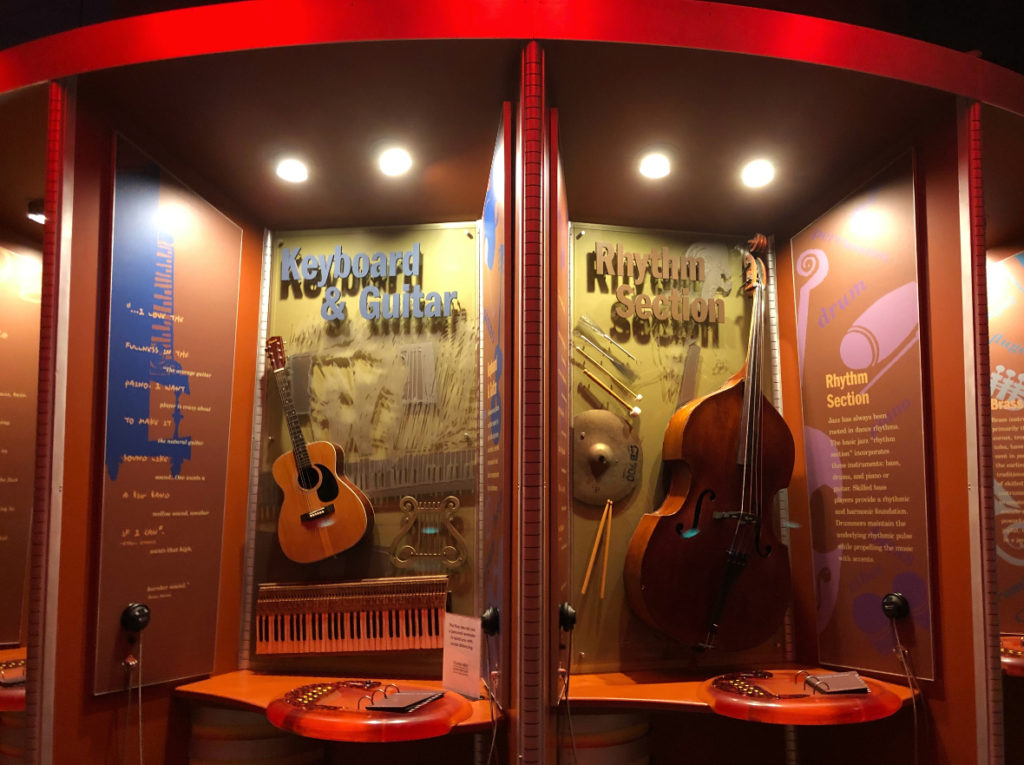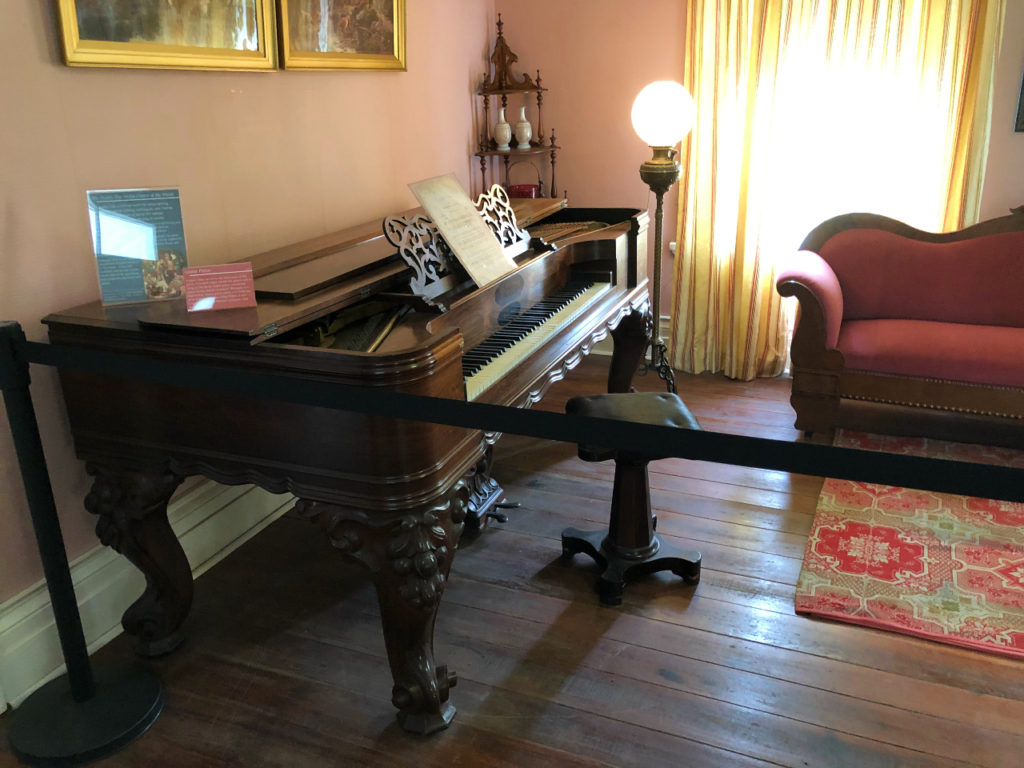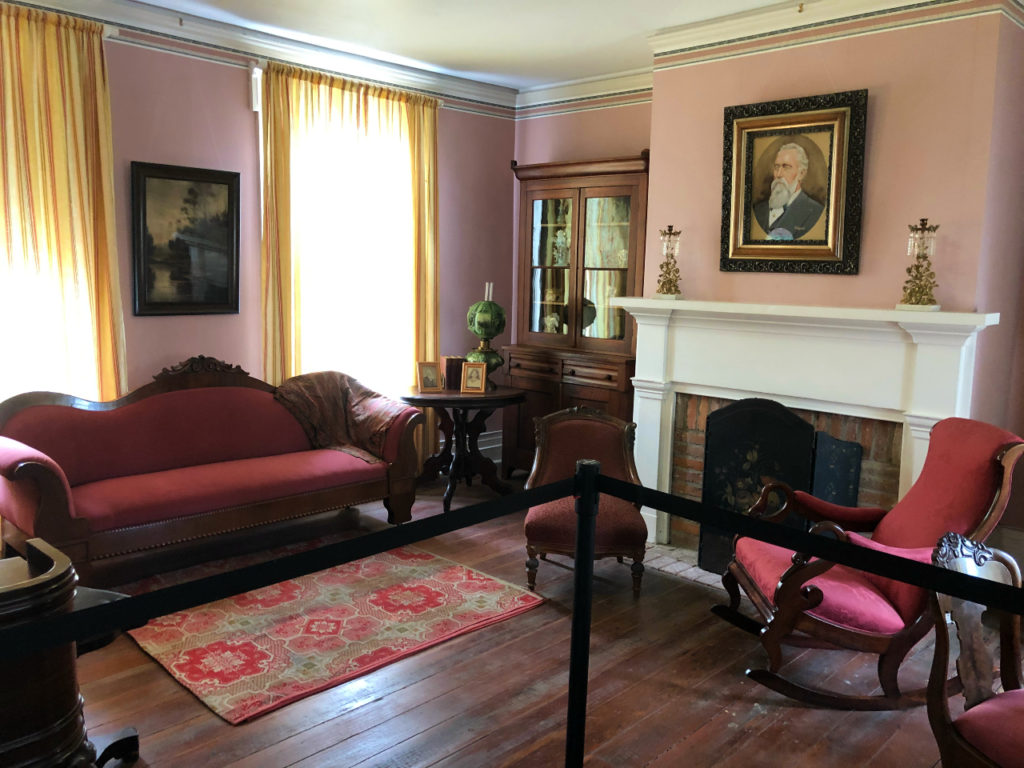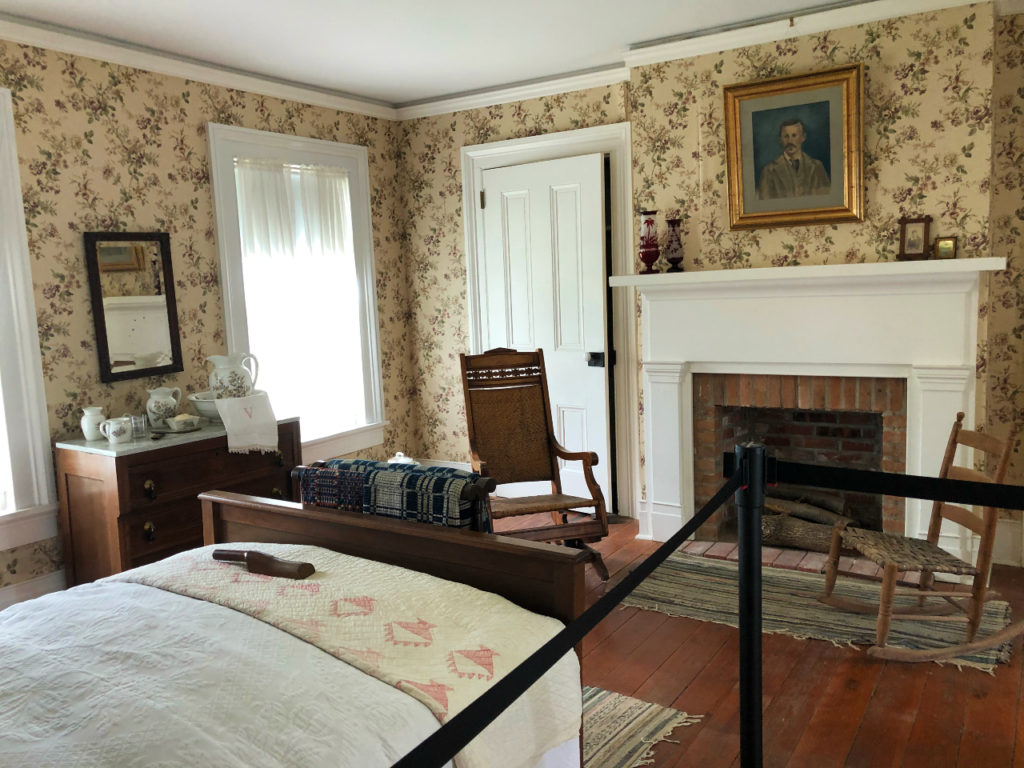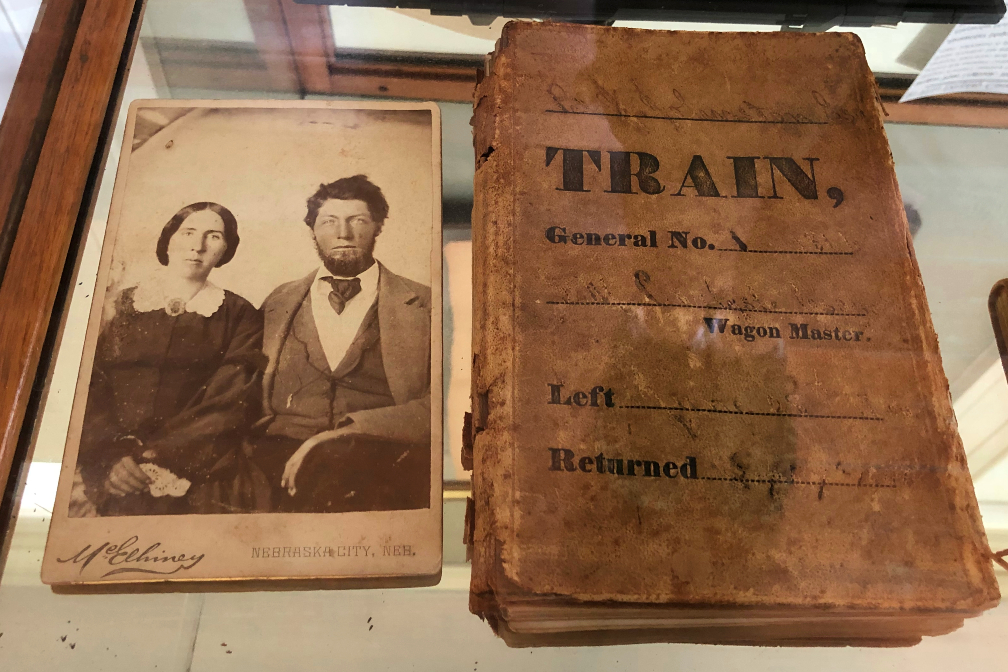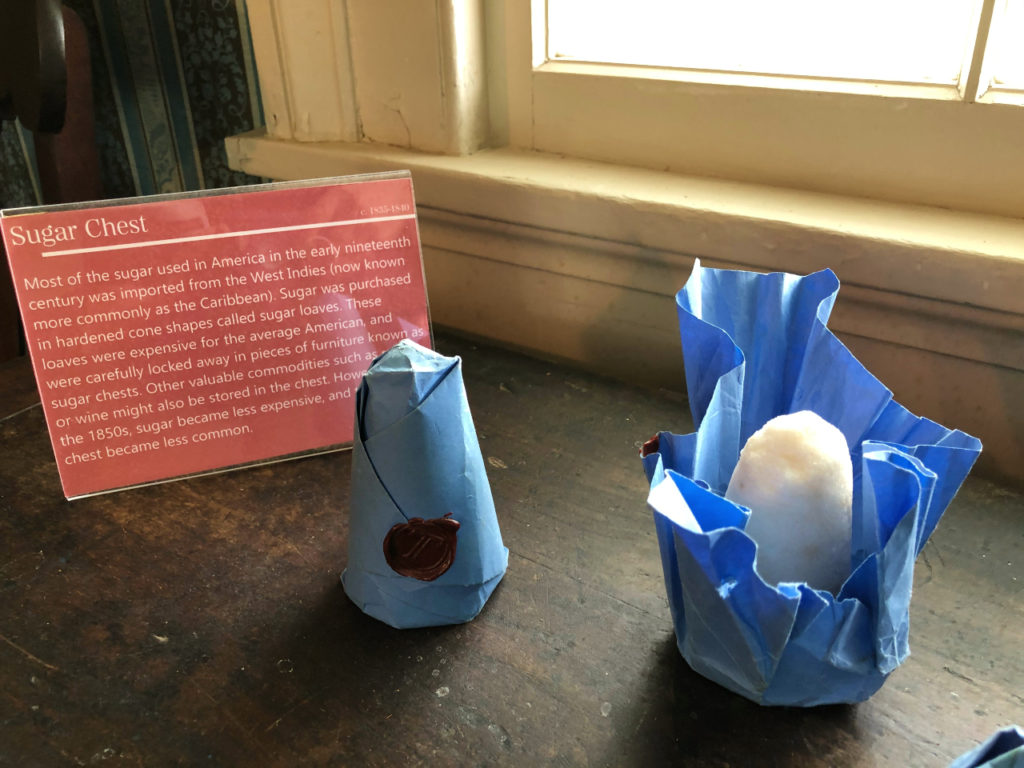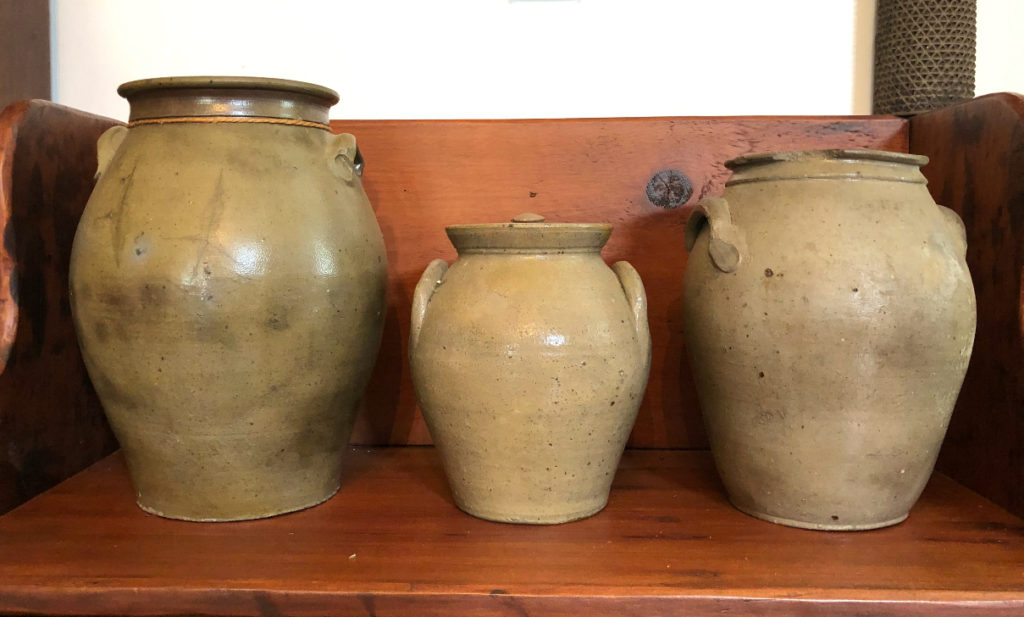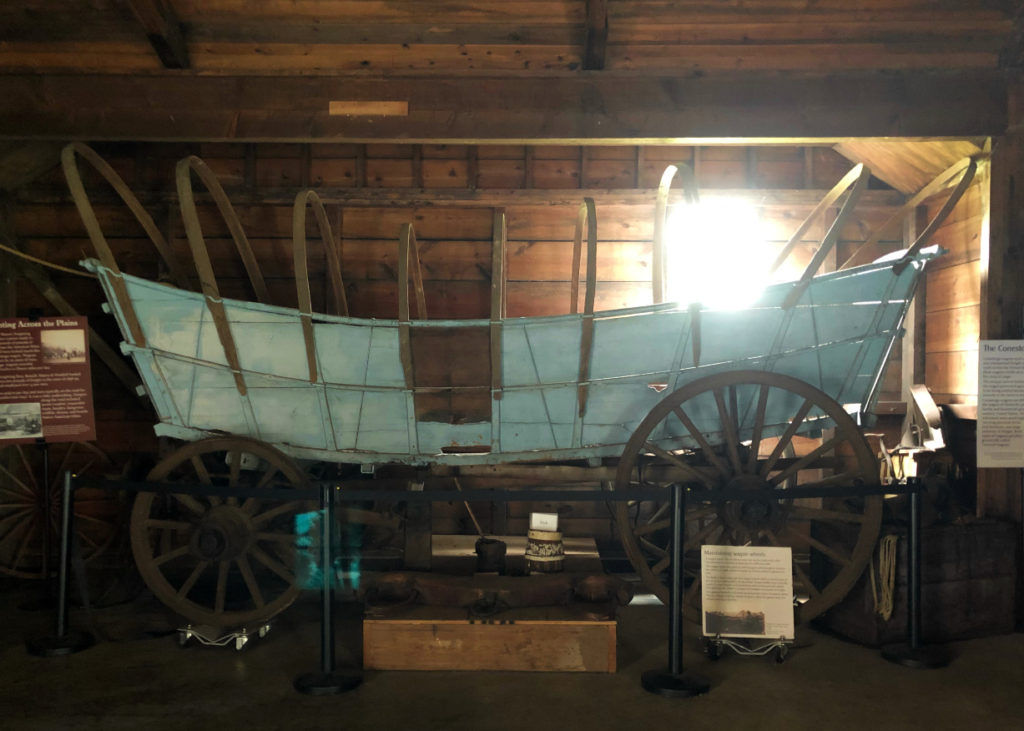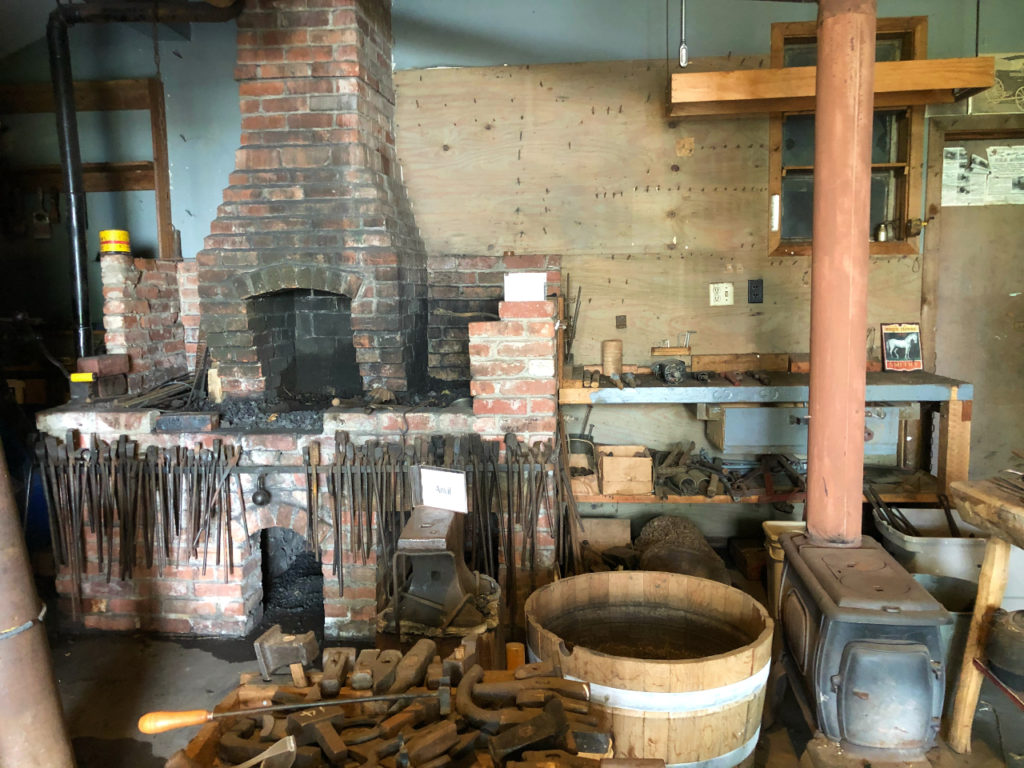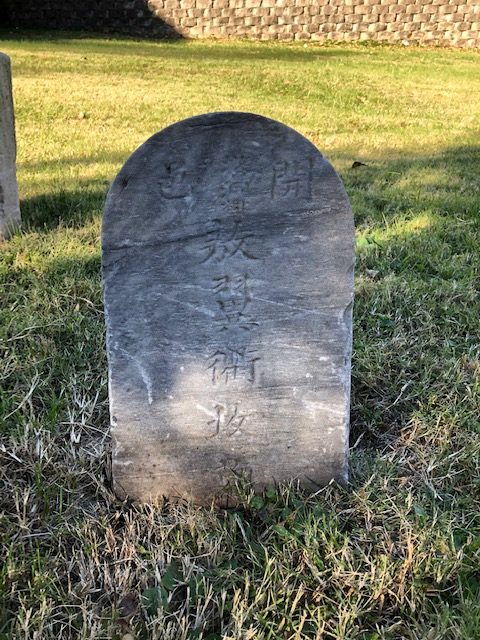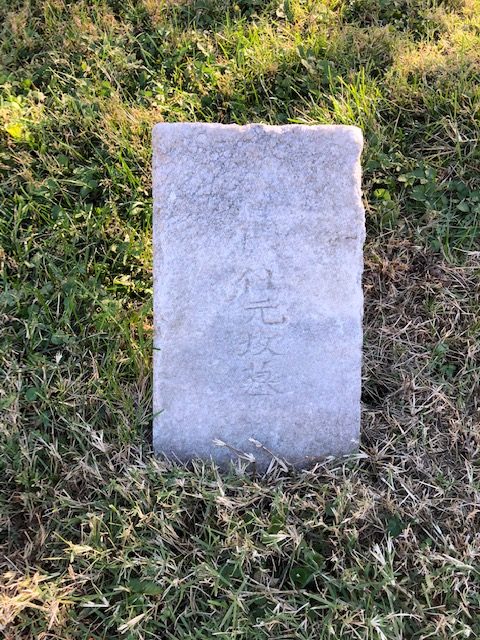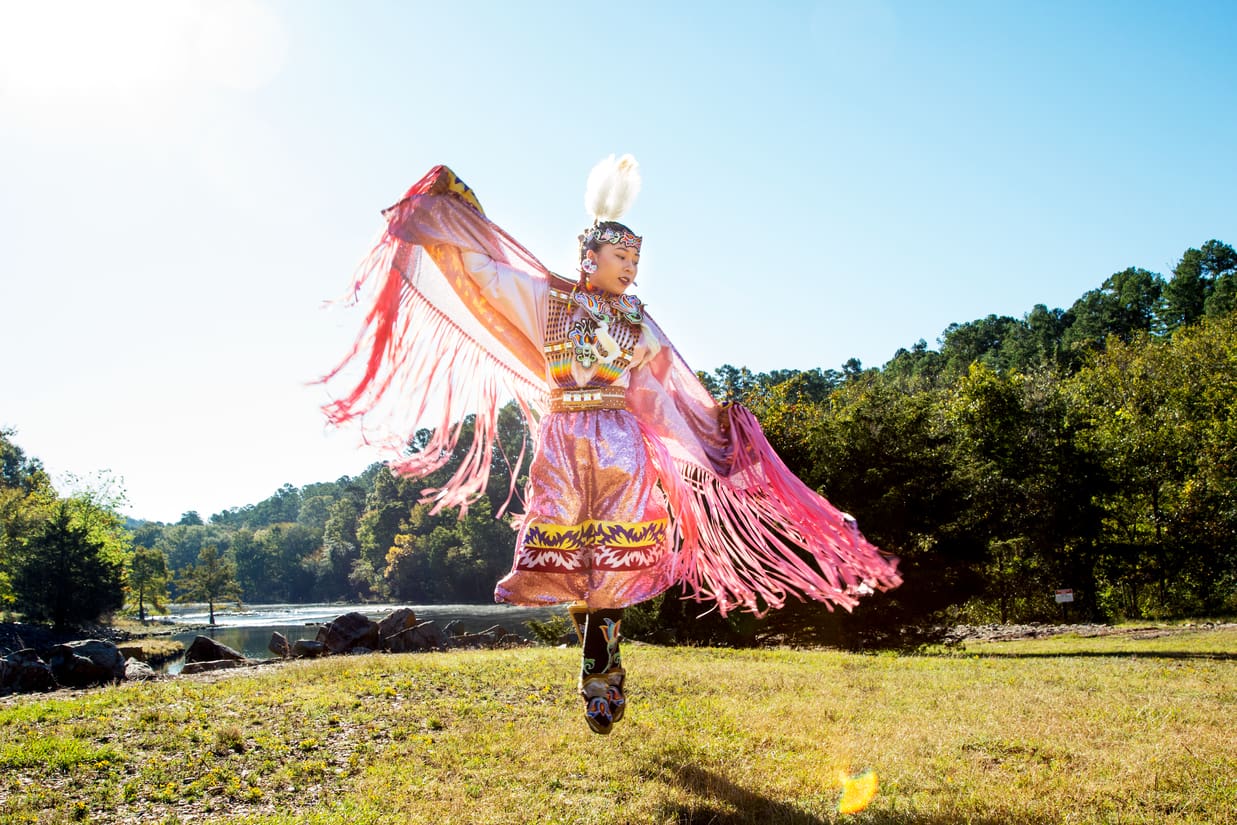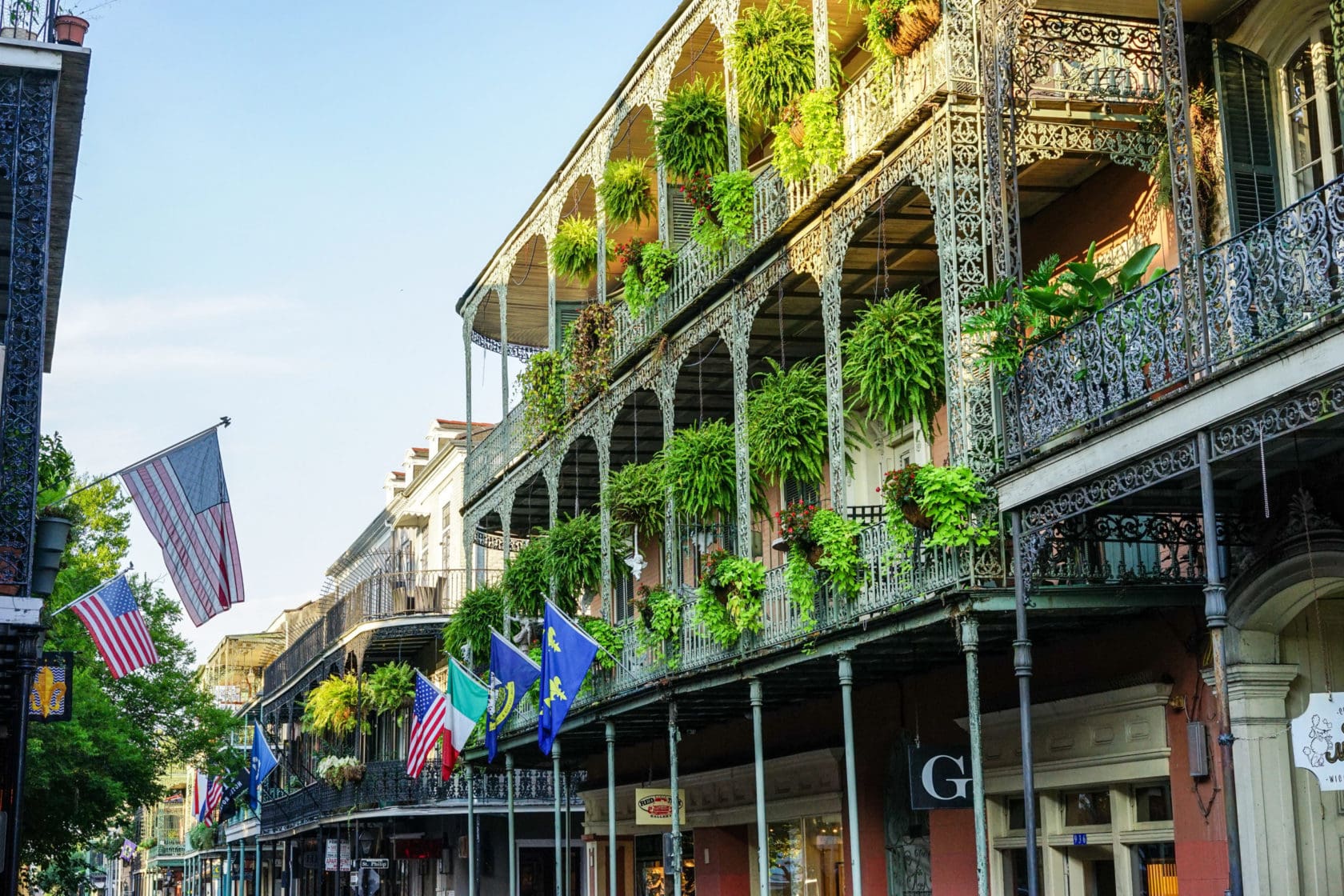One of the things I did this summer was to explore in my own backyard! Here in Kansas City, during “normal” times, there are plenty of things to do! There is something for everyone! And while we are best known for our barbecue and our Super Bowl Champion Kansas City Chiefs, there is much more to our city! I will be focusing on sites that are related to history, of course! I have even narrowed my seven sites down to ones that are still open to the public despite the pandemic! A few of these places I have visited before, but there are also several that I had not despite the fact that I have lived here all of my life!
So without further ado, here are my seven must-see historical sites in Kansas City right now that are still open despite the ‘Rona…
- National World War I Museum and Memorial
- Steamboat Arabia Museum
- Negro League Baseball Museum
- Battle of Westport Driving Tour
- American Jazz Museum
- Alexander Majors House and Barn
- Union Cemetery
1. National World War I Museum and Memorial
Number one on this list is the National World War I Museum and Memorial! This place is AMAZING, and is by far my favorite! If you don’t do anything else historic in Kansas City, go to this museum! It is the only museum in the United States dedicated only to World War I, the Great War. Their website, theworldwar.org, rightfully boasts that they are “Home to the most comprehensive collection of WWI objects in the world.” In fact, in 2014, it was recognized by Congress as the National World War I Museum and Memorial. The building and grounds of this museum and memorial are full of symbolism (Be sure you investigate this when you visit!), and the exhibits inside are top notch!
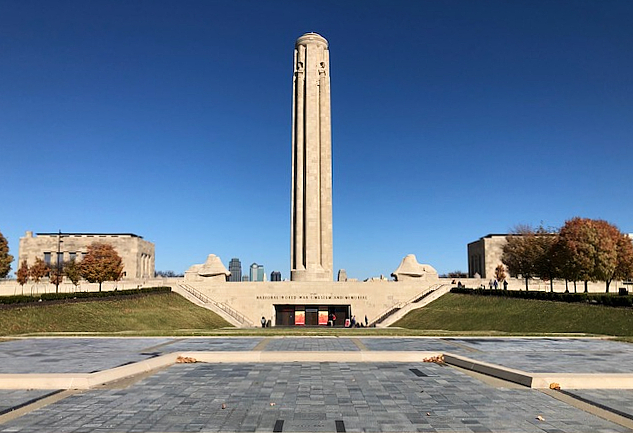
Perched on a hilltop just south of the downtown area, the Liberty Memorial Tower stands over 200 feet tall, and on a good day (meaning limited wind and no coronavirus), you can take an elevator and the equivalent of several flights of stairs to the observation deck at the top. From there you have a 360° view and can quite literally see for miles! Looking to the west you have a great view of the river bottoms and the old livestock markets which first made Kansas City famous, and to the north are spectacular views of Union Station and Downtown. At night, the Flame of Inspiration can be seen “burning” (it is actually steam and lights) at the top of the Tower.
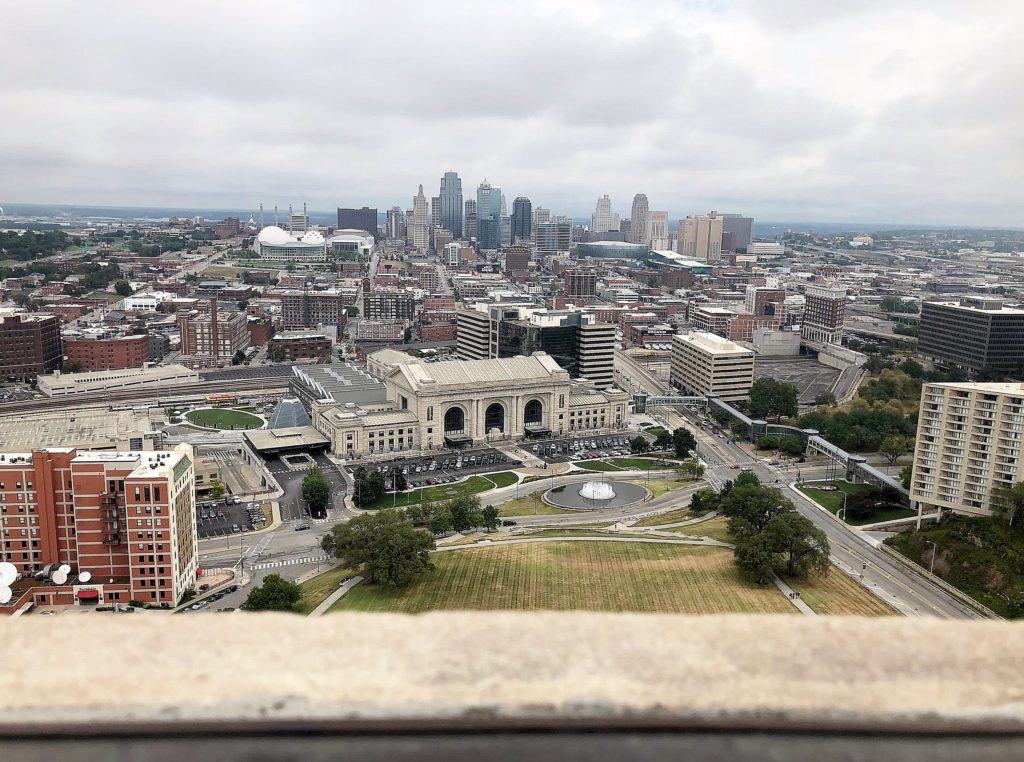
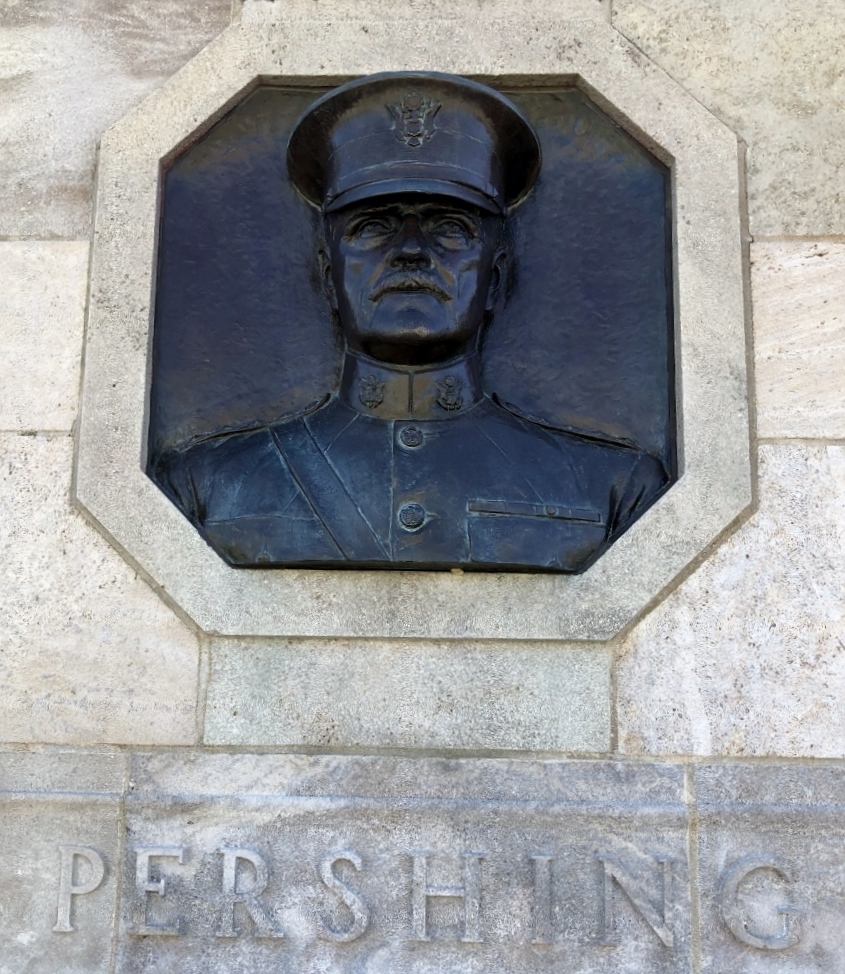
The Liberty Memorial itself has an interesting history. For example, the site dedication in 1921, was attended by five Allied commanders (General Jacques of Belgium, General Diaz of Italy, Marshal Foch of France, General Pershing of the United States [and more specifically, Missouri!], and Admiral Beatty of Great Britain), and was the first time all five were in the same place at the same time! A plaque for each one is on the wall where the dedication ceremony took place. The Memorial, sadly, fell into disrepair and closed in the mid 1990s. However, the people of Kansas City voted in a sales tax to support renovations and also the museum expansion. In 2006, the Liberty Memorial received National Landmark status, and was reopened to the public.
The museum expansion also opened to the public in 2006 with fantastic exhibits! Visitor’s are immediately reminded of the human cost of World War I (approximately 9 million) as entering the museum requires one to walk across the Paul Sunderland Bridge, a glass floor over a field of poppies, 9,000 to be exact – one for every thousand lives lost in World War I. The poppy became the World War I remembrance symbol and was inspired by John McCrae’s poem, “In Flanders Fields.”
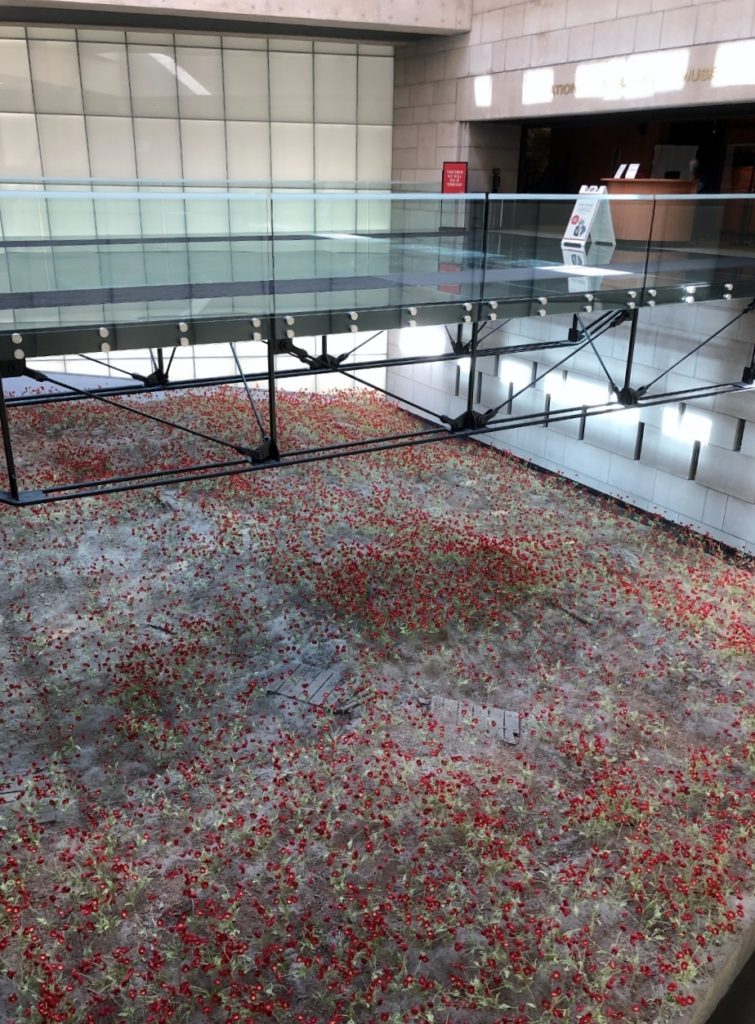
The Museum has a short introductory film to watch prior to entering the main exhibit. The events of the war are presented in chronological order and alongside thousands of artifacts including uniforms, tanks, ambulances, torpedoes, letters, and other official documents. There are several interactive exhibits, a film projected across a “no man’s land” scene, and a bomb crater that you can walk into. There are also “trenches” that you can look into through “windows” while listening to gunfire and shelling sounds and first person accounts of life in the trenches.
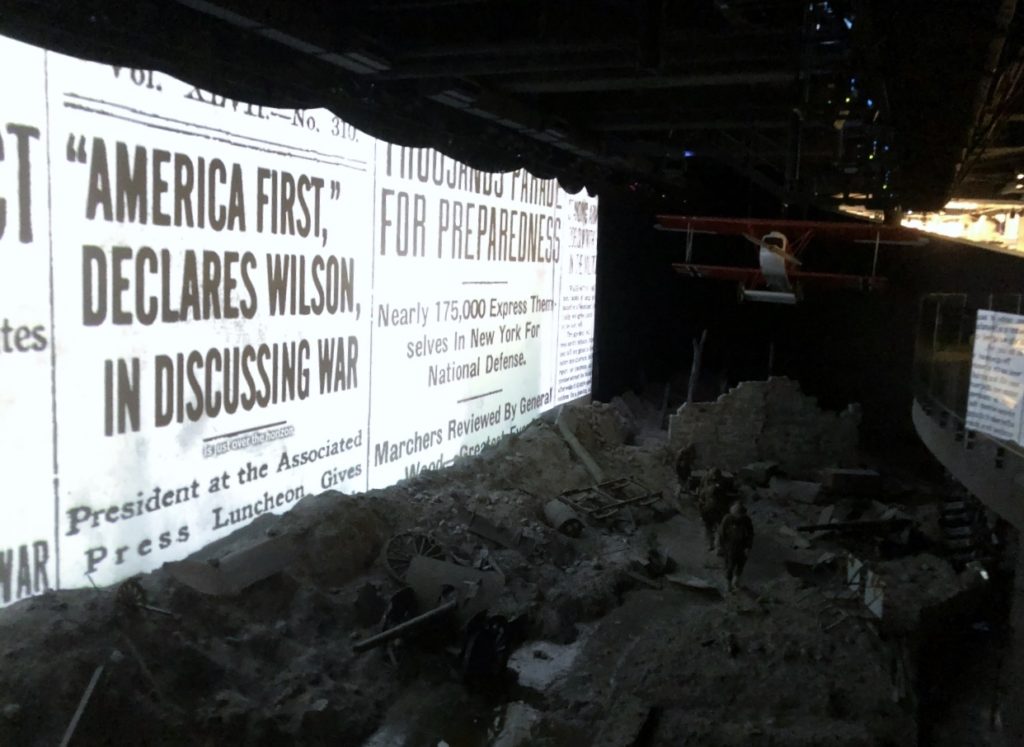
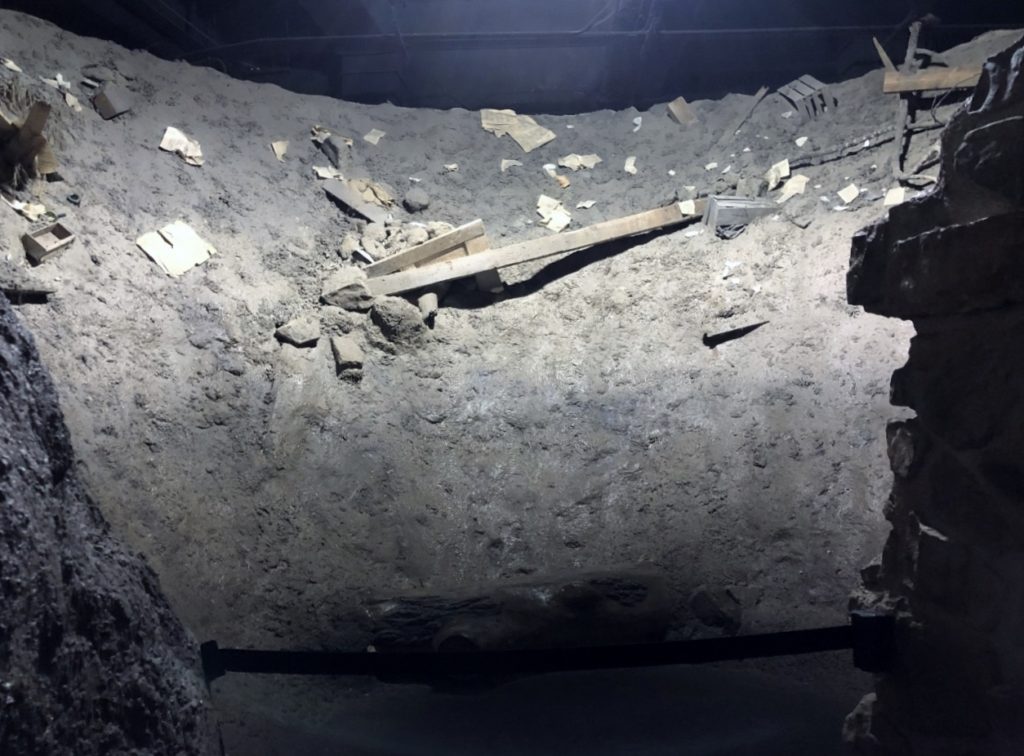
I could write an entire blog post on just this museum, it is that outstanding! Maybe someday I will, but for now, for this post, I need to move on because I still have more must see sites to share with you! Right now the Museum is open from Tuesday to Sunday 10am to 5pm, and admission is $10-$18 depending upon your age and military status. It is recommended to purchase tickets in advance due to Covid. But seriously, this should be at the top of anyone’s list who visits Kansas City!
Side Note – other points of interest within the immediate vicinity of the World War I Museum and Memorial:
- The Money Museum – currently closed due to Covid
- The National Archives – currently closed due to Covid
- Crown Center – Currently open: Sea Life Aquarium, Legoland, & Coterie Theater. Currently closed due to Covid: Hallmark Visitor Center aka Kaleidoscope
- Union Station – open – home to Science City, Gottlieb Planetarium, a model train exhibit, an escape room, and a couple of restaurants. They also have special exhibits which in the past have included things such as Pompei, DaVinci, and Stonehenge.
- Union Cemetery – historic cemetery and urban park (see number 7)
FUN FACT: If you go looking, you can find a bullet hole in the front of the building from the infamous Union Station Massacre in which gunmen murdered 4 FBI agents and their prisoner, Frank Nash, on June 17, 1933.
2. Steamboat Arabia Museum
Number 2 on my list is the Steamboat Arabia Museum. This museum is located in the River Market area of Kansas City, and is home to literally thousands of artifacts recovered from the wreckage of the steamboat, Arabia. The Arabia sank in 1856 after hitting a snag in the Missouri River just outside of Kansas City.
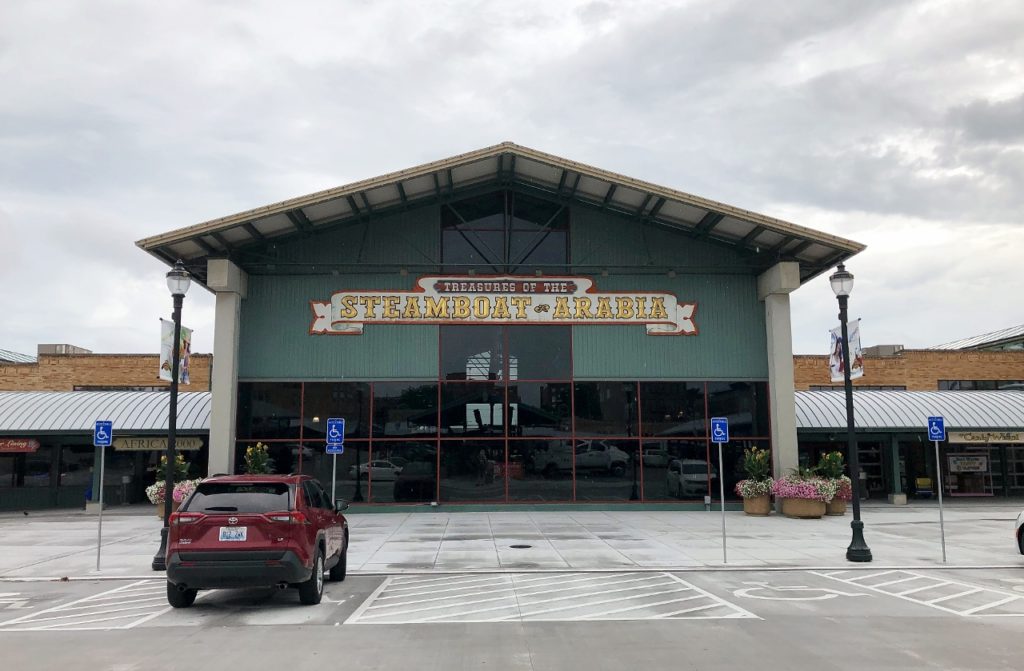
The Missouri River has changed course over time since the steamboat sank, but in 1988, the wreckage was discovered in a field to the west of the river’s current channel. The dig was a privately funded project, involving the five men who located the wreckage. They were able to recover from beneath 45 feet of dirt and mud the 200 tons of cargo, some parts of the steamboat, and a few other interesting finds.
A visit to the museum starts with a short video on the history of the discovery and recovery. We were fortunate that one of the five men involved in the recovery was present the day we visited. He spoke to us briefly after the video, and shared a story about discovering canned goods that were still edible – yes he had sampled some! He was also very happy to answer questions.
As you proceed through the museum exhibits, you will see the thousands of artifacts recovered from the wreckage. The website, 1856.com, claims they have “the largest single collection of pre-Civil War artifacts in the world” and I believe it! These artifacts include beads, buttons, shoes, clothing, perfume, children’s toys, tools, guns, china, glass, cookware, and pipes plus much, much more.
If you are lucky, someone will be working in the preservation lab when you visit, and you can watch them work. We were fortunate enough to have the technician take time to explain the preservation process to us, and even let us smell some of the perfume that was salvaged.
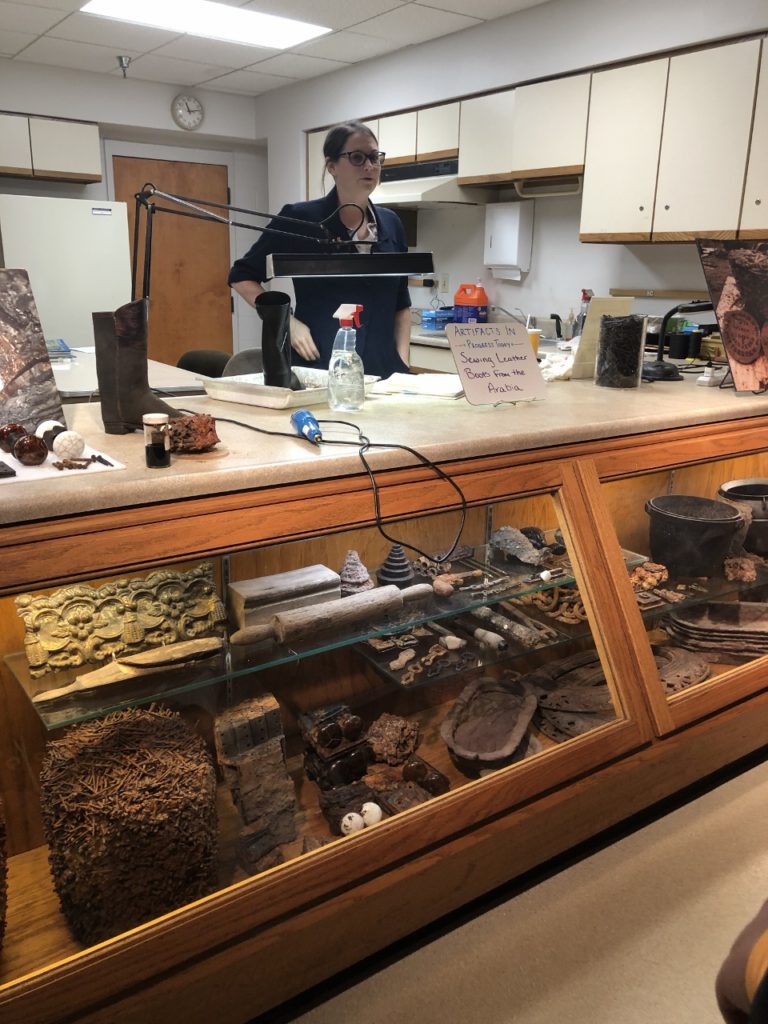
In addition to the cargo, you will get to see close up what the steam engines on the boat looked like. You will see the “snag,” that caused the ship to sink, as it was also recovered. The museum has a large piece of the stern of the ship, including the rudder, on display, and interestingly, it has to receive a shower each day in order to maintain its current state of preservation.
Visitors will also see the remains of the only casualty in the shipwreck, a mule. The mule has an interesting story as it’s owner stated in an interview that he had freed the mule, but it was too stubborn to get off the boat. However, when the mule was discovered – over 100 years later mind you, he had been saddled and bridled, but the reins were still tied to the boat!
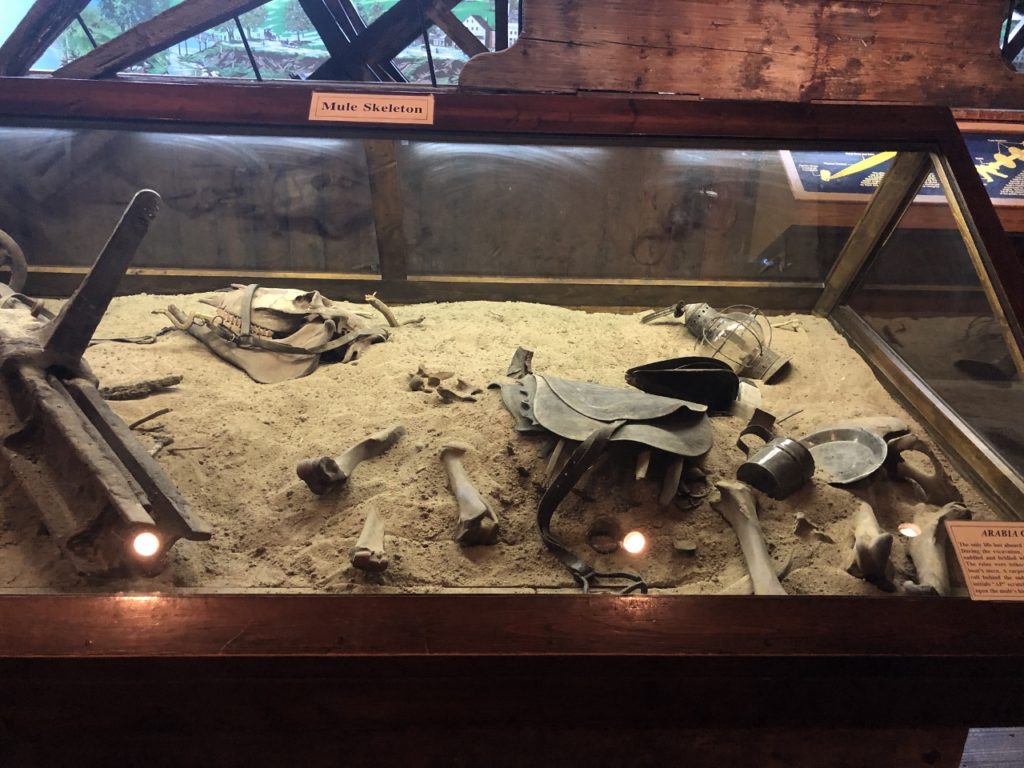
The Steamboat Arabia Museum is fascinating, and appropriate for all ages. It is open 7 days a week and costs from $5.50 to $14.50 depending upon your age.
Side Note – other points of interest within the immediate vicinity of the Steamboat Arabia Museum:
- Kansas City Farmer’s Market (open Saturday and Sunday mornings – get there early!)
- The River Market – this area is full of history – formerly known as Westport Landing, it was Kansas City’s first incorporated district. In the 1970’s it was known as the River Quay and was subject to violence amidst a mob war. Today, the revitalized neighborhood is home to many restaurants and local shops.
FUN FACT: The Kansas City Streetcar runs between Union Station and the River Market through Downtown, and it is FREE to ride!
3. Negro League Baseball Museum
Number three on the list is the Negro League Baseball Museum. This place is packed full of information and does a wonderful job detailing not only the history of the Negro League from its formation in 1920 until it dispersed in 1955, but also the history of black baseball players outside of the League.
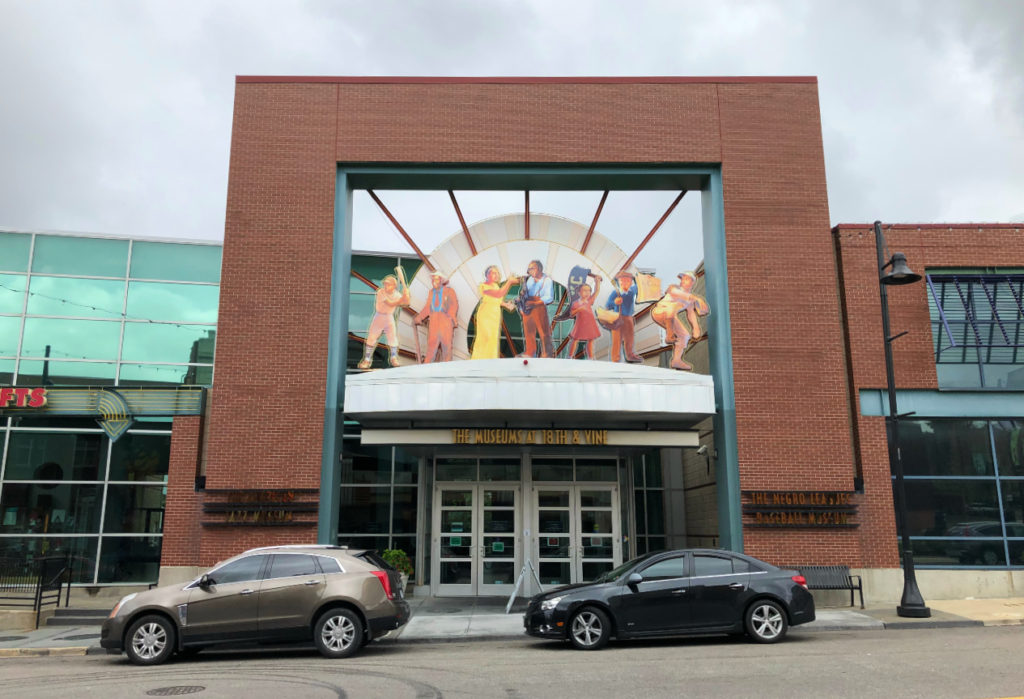
One of the first displays in the museum shows the locations of the various teams and states, “The term ‘Negro League Baseball’ describes the highest level of baseball played by segregated black teams. The Negro leagues operated parallel to the white major leagues with supporting minor league teams playing at a lower level.” In the communities with a team, the baseball game was a classy popular event, people dressed up to attend and the players wore suits on travel days.
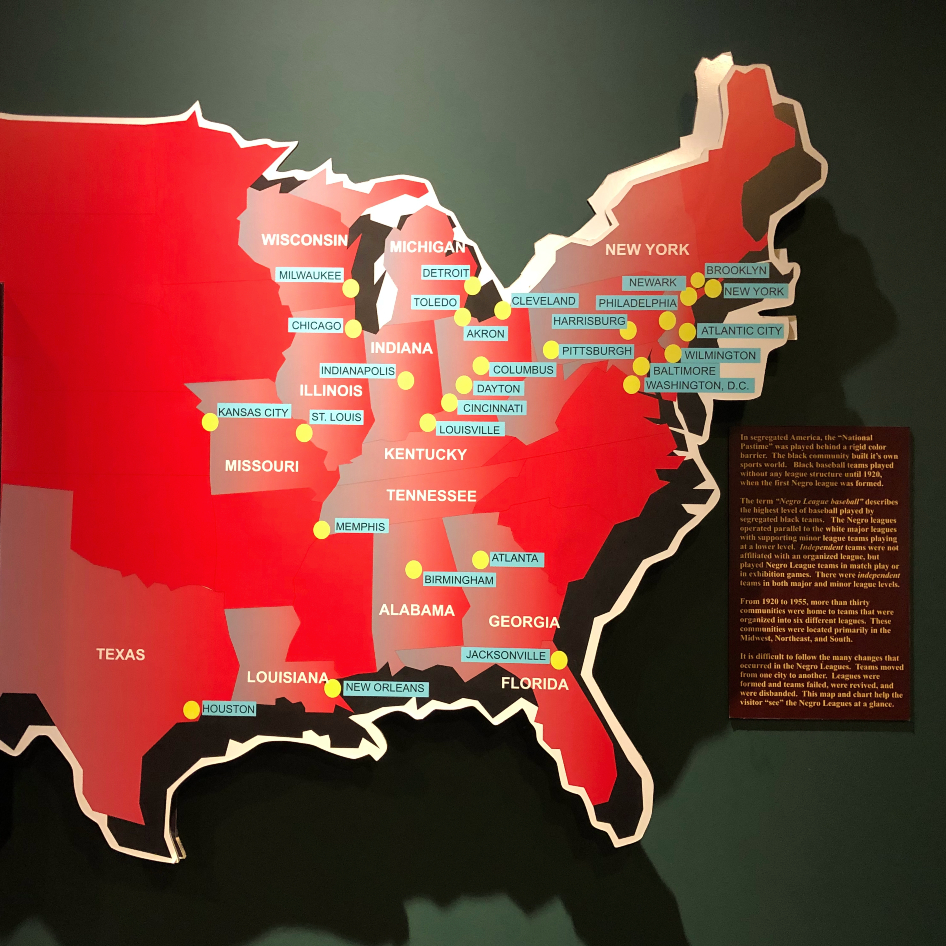
Did you know that between 1867 and 1898 several black players played on white teams, and three all-black teams played in white leagues? The Cuban Giants, New York Gorhams, and York Monarchs! Keep in mind this was during the Reconstruction period and even during the beginnings of the Jim Crow laws that segregated the entire country including eventually baseball. In 1884, Moses Fleetwood Walker became the first black player in the Major Leagues when his Toledo team joined the American Association. Unfortunately, however, by 1887 he was being excluded from some venues.
Most black baseball teams were traveling “barnstorming” teams until the “Great Migration” or the “Field to Factory Movement” in the early 1900s when the nation’s economy shifted from agrarian to industrial and many black people moved to northern cities for jobs. This also brought baseball into the cities, and on February 13, 1920, Rube Foster and several other team owners met at the Paseo YMCA to plan and form the Negro National League.
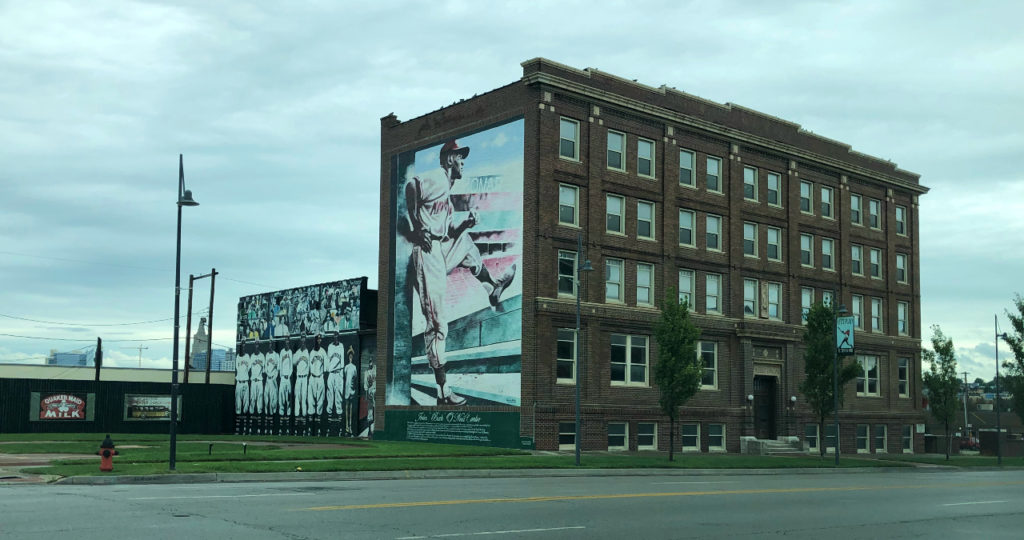
Exhibits highlight both the accomplishments of players like Josh Gibson who holds several records for longest hit home runs (he had a 505 foot one in Yankee Stadium), and the hardships faced by the players in the League. Bill Yancey described there being no place to stop and eat between Chicago and St. Louis and then again between St. Louis and Kansas City because sadly, they were refused service.
Jackie Robinson, of course, has an exhibit of his own. Signed by the Dodgers in 1947, who paid the Kansas City Monarchs nothing for breaking his contract, Robinson became the first black player to “break the color line” in baseball. It was not an easy road, and ironically realizing the dream of black players in the Major League is what eventually led to the demise of the Negro League. One exhibit illustrates the unsuccessful efforts to keep the League afloat with things such as female players and gimmick games. The League was officially dismantled in 1955.

One of the last exhibits is a “locker room” containing the jerseys, hats, and equipment of some of the most famous Negro League players who signed with Major League teams including Kansas City’s own Buck O’Neil and Satchel Paige. The final exhibit is the Field of Legends where life-sized statues of legendary Negro League players take the field. As a baseball fan, I thoroughly enjoyed this museum, and I learned so much!
This is definitely a stop that all should make! Tickets must be purchased in advance for a timed entry due to Covid. Tickets can be purchased through the website at nlbm.com for $6-$10 depending upon age.
Side Note – other points of interest within the immediate vicinity of the Negro League Baseball Museum:
- 18th & Vine Jazz District – restaurants and entertainment
- American Jazz Museum (see number five)
- Black Archives of Mid-America – collections of black history
- Paseo YMCA – where Negro League Baseball was born, now the John “Buck” O’Neil Center
- Arthur Bryant’s Barbeque – credited with starting Kansas City’s barbeque heritage
FUN FACT: In 1924, the Kansas City Monarchs were the first World’s Colored Champions (and went on to win many more).
4. Battle of Westport Auto Tour
Number four on my list is the Battle of Westport Auto Tour simply because it is a great way to see so much of the city AND I love Civil War history! Did you know that the Battle of Westport is also called the Gettysburg of the West? Basically it did for the Western Theater of the Civil War what Gettysburg did for the Eastern Theater. It was both the largest and the last battle fought west of the Mississippi River. The battle took place over much of Kansas City on October 21-23, 1864.

You can find specific directions for the auto tour on the Battle of Westport website. The tour will take the better part of a day to drive the entire route if you are like me and stop to read the Historic Marker signs and explore! Almost every stop on the route has a corresponding Historic Marker. Or should I say that we were able to locate most of the historic markers for the listed stops. We never did find #7, #9, #15, or #21, but this doesn’t really detract from the tour at all. You have to use your imagination regardless, because Kansas City looked nothing like it does now in the 1860s! Founded in 1838 and incorporated in 1850, it was still a small town during the Civil War.
The Auto Tour starts off in the Westport neighborhood of Kansas City and then heads past the Vietnam Veteran’s Memorial Fountain (worth a stop), through the Country Club Plaza, and into the Sunset Hill neighborhood of the Country Club District and Loose Park. You will definitely want to stop and get out for Stop 8 in Loose Park as there are quite a few plaques to read detailing the Battle here as well as some artillery to look at.
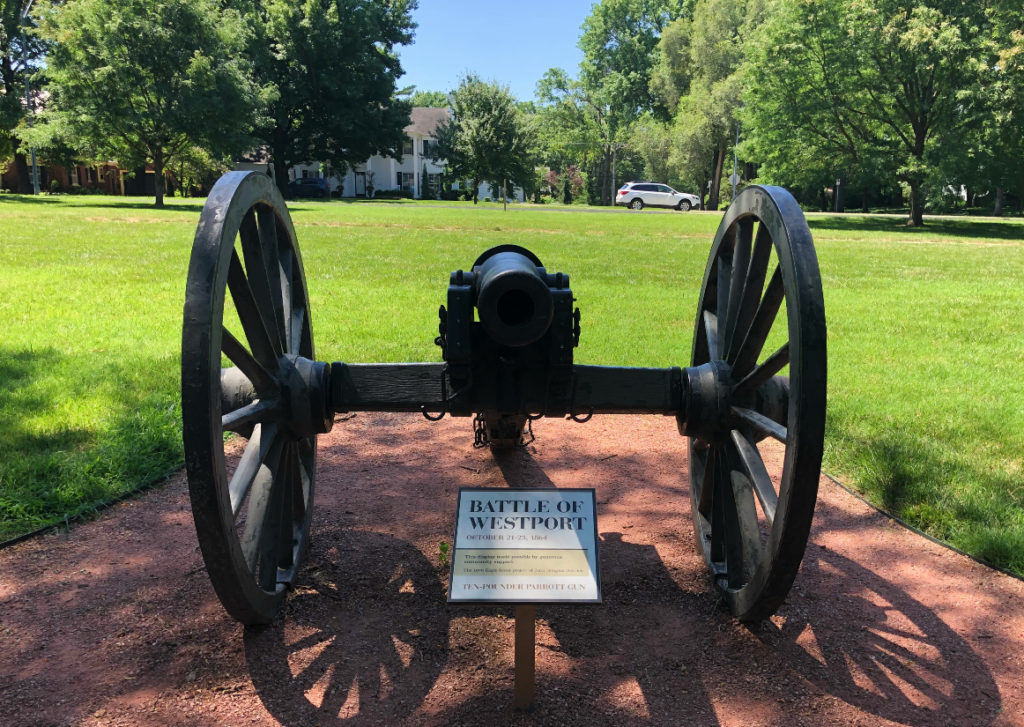
Stop 10 – The John Wornall House is also worth your time to tour. It is open from Wednesday to Sunday, and takes around 45 minutes to an hour to tour depending upon how much reading you want to do. Admission is currently reduced from $8 to $5 due to Covid. The Wornall House belonged to the John Wornall Family from its construction in 1858 until the 1960s. The house then became a museum focusing on life in Kansas City during the Civil War Era. All of the furnishing are from this period in history, some belonged to the family, and they have exhibits on everyday life, women, slavery, the Border Wars, and the Battle of Westport. They also have an amazing display of a Civil War medical/surgical kit!
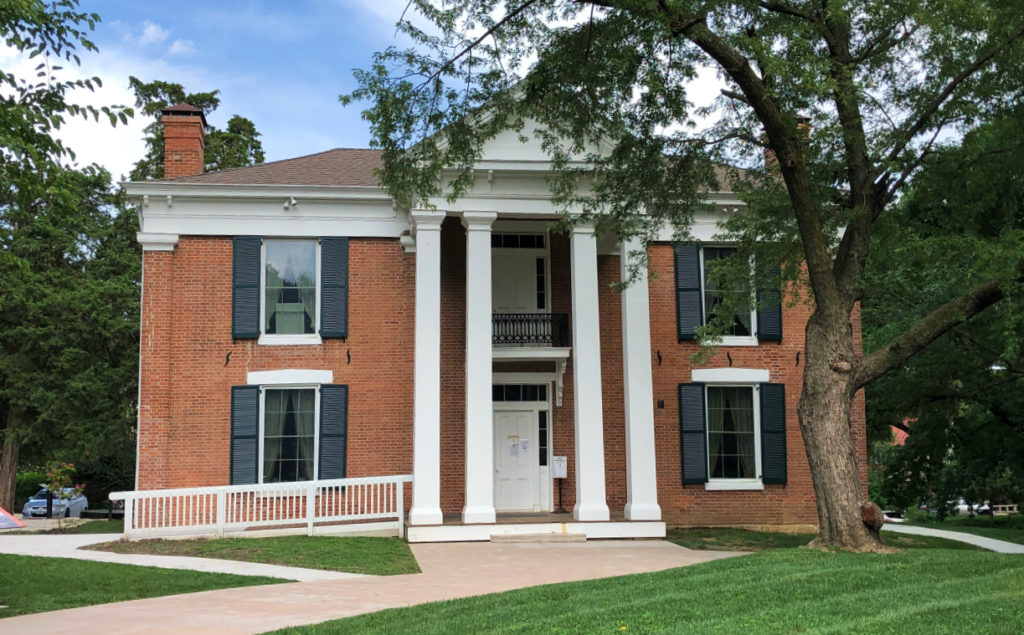
The Forest Hills Cemetery at stop 13 is also worth wandering around in a bit. The stop on the tour will send you to Confederate General Shelby’s grave along with many other confederate soldiers, many of whom are listed as “unknown.” However, Satchel Paige, Hall of Fame Negro League and Major League Baseball player, is also buried here.
The Visitor’s Center at Stop 15 in Swope Park, is unfortunately, not open, and I also believe it has relocated. You will spend some time in the Swope Park area seeing Byram’s Ford, the Meadow, Pratt’s Artillery, and the Battle of the Big Blue before heading south toward the Red Bridge area. To get to the Stop 20 Historical Marker, you will have to park on the side of the road and walk as the road is currently closed. It is not very far at all, however.
From Stop 20, you will begin traveling the Sante Fe Trail to Stop 22, New Santa Fe. You should definitely get out here and wander around. The stop is at the cemetery of the New Santa Fe settlement that was in route to Santa Fe, New Mexico on the Santa Fe Trail. You can still see wagon swales in the cemetery along with what is left of the old church’s chimney and baptismal. There are also some really old graves and some sad stories here. An information pamphlet is available at the site. I found it fascinating! From here you will continue on to the final stop #23, the site of the Thomas Farmhouse where the victorious Union leaders planned their pursuit of General Price and his army, less the 1000 men he lost!
Side Note – other points of interest within the immediate vicinity of the Battle of Westport Driving Route:
- Westport – Restaurants, shops & bars. Night life. Kelly’s Westport Inn – US Register of National Historic Places built in 1851 and rumored to have been a stop on the Underground Railroad.
- Plaza Westport – Vietnam Veteran’s Memorial Fountain, Nelson Atkins Museum of Art
- Country Club Plaza area – lots of restaurants and shopping
- Loose Park – Rose garden
- Brookside – shops and restaurants
- Swope Park – Kansas City Zoo, Starlight Theater
- Red Bridge – Red Bridge, Santa Fe Trail wagon swales
5. American Jazz Museum
Number five is the American Jazz Museum, which is right next door to, or rather across the hall from the Negro League Baseball Museum. A combo ticket to visit both museums can be purchased on the American Jazz Museum’s website americanjazzmuseum.org/visit for $8-$15 depending upon your age. Admission to only the American Jazz Museum is $6-$10. Be sure to take some time before or after your visit to take in the American Jazz Walk of Fame which lines the sidewalk in front of the museum and includes such names as Louis Armstrong, Nina Simone, Ella Fitzgerald, and many others!
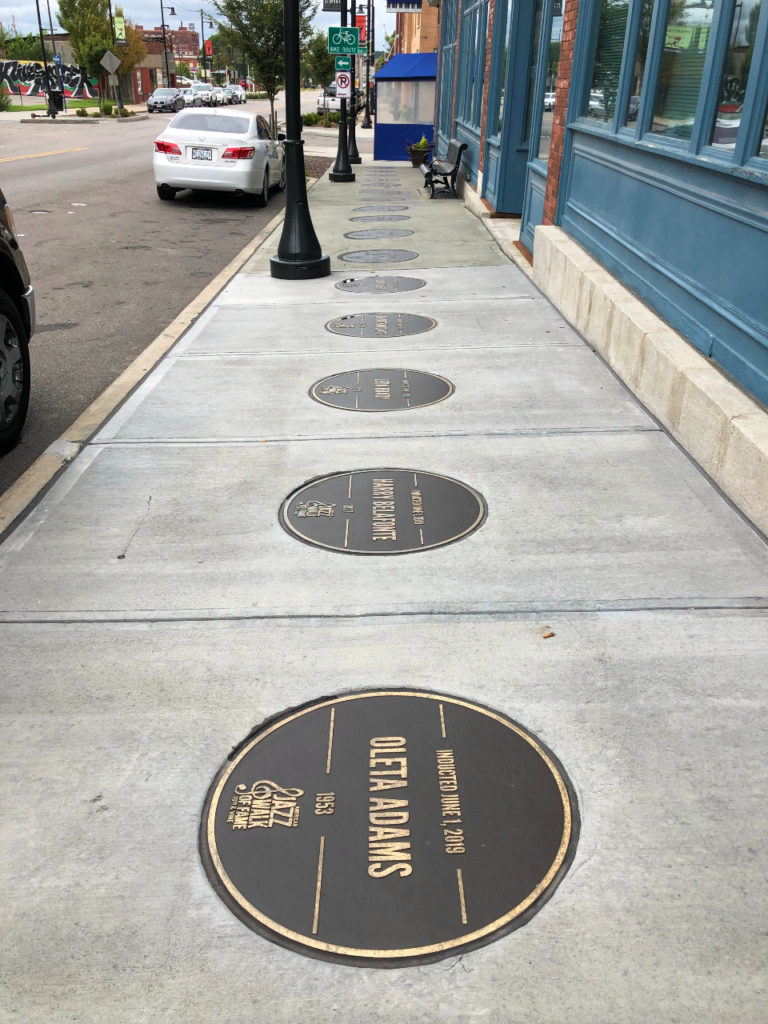
Jazz came into its own during the Prohibition era, and Kansas City was leading the way as artists such as Charlie Parker gained popularity. The displays in the first section of the museum focus on various artists, and their particular styles and contributions to the genre. Did you know that three Kansas City musicians played with Duke Ellington?
Louis Armstrong, Billie Holiday, and Ella Fitzgerald each have their own display, of course, and even Frank Sinatra gets a mention. Many of these exhibits have audio components, and in the next gallery, you have the opportunity to listen to various instrument families used in jazz music: brass, reeds, rhythm section, keyboard and guitar. There is a brief exhibit on the history of the recording industry which began in 1877 with Thomas Edison’s phonograph patent, and an exhibit on album art.
FUN FACT: On May 15, 1953, Charlie Parker’s band played in Massey Hall in Toronto, and this performance is considered one of the greatest in the history of jazz music.
6. Alexander Majors House and Barn
Number six on the list is the Alexander Majors House and Barn built in 1856 by Alexander Majors. Imagine living literally at the edge of the United States. Majors was a farmer from Kentucky who moved to Missouri, and purchased 300 acres of land on the Missouri border. He built his home facing west looking out over the Kansas Territory where he would make (and later lose) his fortune with a freighting business hauling goods along the trails west. The Kansas/Missouri state line actually runs through the front yard of this property, right along the sidewalk!
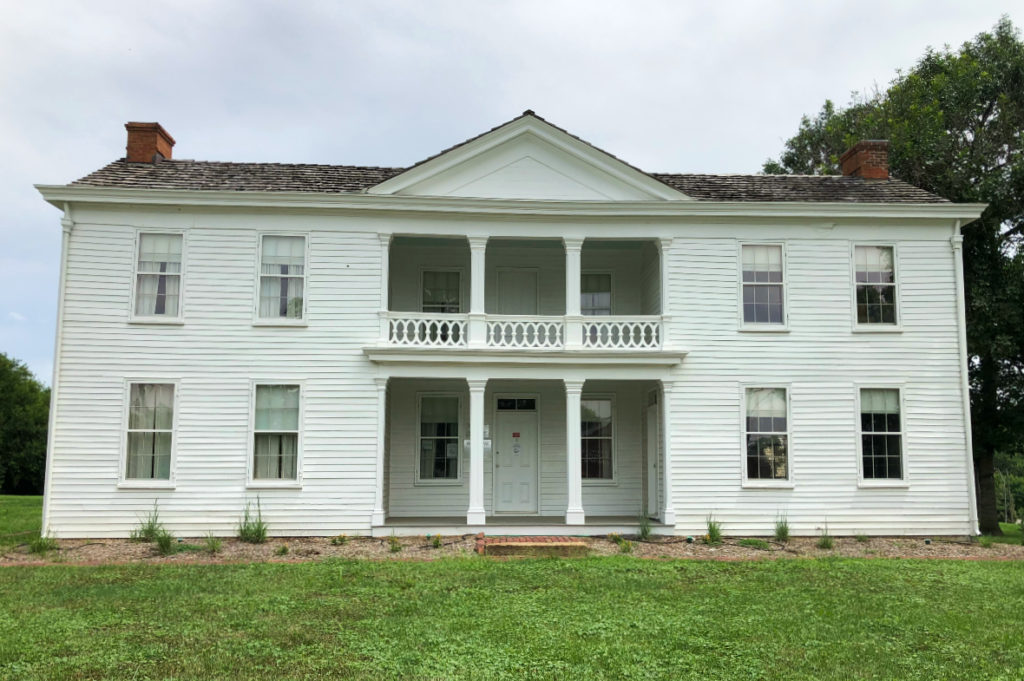
Majors is considered the “commercial founder” of Kansas City. His government connections led to a transportation boom and the increased use of Westport Landing, and the livestock needs of his freighting company contributed to the formation of the Kansas City Stockyards. From 1858 to 1859, Majors and his two partners, William Russell and William Waddell had hauled 16,000,000 pounds of freight and had 4,000 employees who were paid $1 per day. Majors was a religious man. He gave all of his employees a Bible, required them to sign a code of ethics, and gave them Sundays off with pay.
More than likely if you have heard of Alexander majors before, it is because Majors and his partners were the founders of the short lived Pony Express in 1860. The Pony Express was a mail route between St. Joseph, Missouri and Sacramento, California. By late 1861, however, it became obsolete with the completion of the transcontinental telegraph line.
Majors only actually lived in this house for two years, and then moved to Nebraska leaving the home to one of his daughters. The house today is furnished with period pieces and interesting artifacts. Exhibits tell of both Majors’s accomplishments and failures, and acknowledge that at least 13 enslaved people were kept by the Majors family, six of whom successfully escaped by way of the Underground Railroad. There is also an exhibit on the life of Victorian era women. Outside in the barn is a conestoga wagon and a variety of wagon parts, and there is also a separate blacksmith shop.
The Alexander Majors House and Barn is currently open from 1:00-4:00 on Thursday through Sunday for self guided tours. Admission is $5. You can purchase a combo ticket for $10 that gains you admission to the Alexander Majors House and the nearby Wornall House (mentioned in number 4 – the Battle of Westport).
FUN FACT: In 1848, Alexander Majors made his first trip from Independence, Missouri to Santa Fe, New Mexico with a team of oxen in the record time of 92 days.
7. Union Cemetery
Last but not least, number seven, is Union Cemetery. Being Halloween, it is fitting that the Cemetery makes the list, but this place would have made the list even if it weren’t Halloween! It is that cool! They even have a walking tour that you can do! This Cemetery is, quite literally, FULL of Kansas City history. If you are one who enjoys wandering around in cemeteries, this is a do not miss, and even if you aren’t, it is still worth a visit.
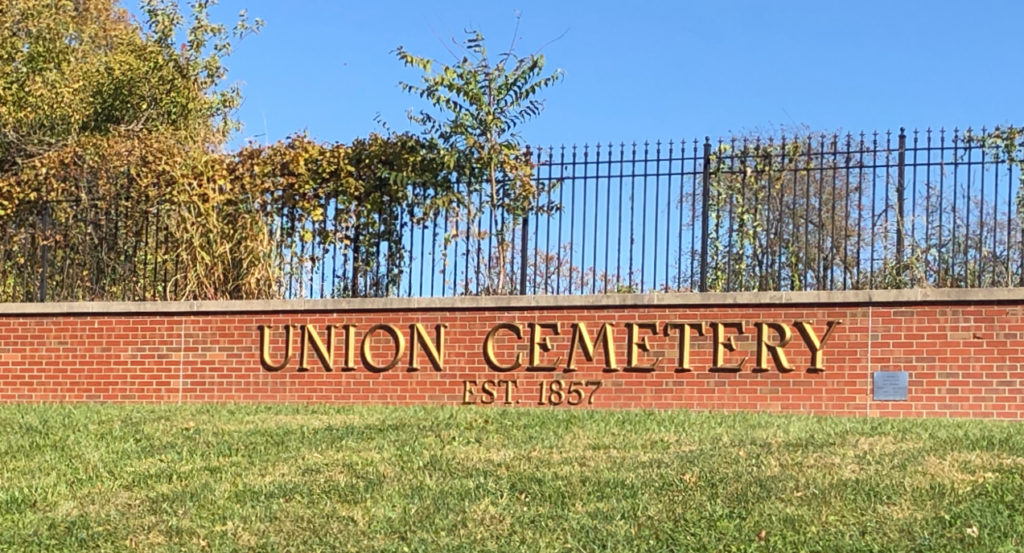
The cemetery came into existence after the 1849 cholera outbreak. At this time Kansas and Westport were two different towns, however, both had run out of room to bury their dead. A tract of land between the two towns was donated, and Union Cemetery, located between Westport and Kansas, opened in 1857 to serve both communities. It is the oldest public cemetery in Kansas City, and on the National Register of Historic Places.
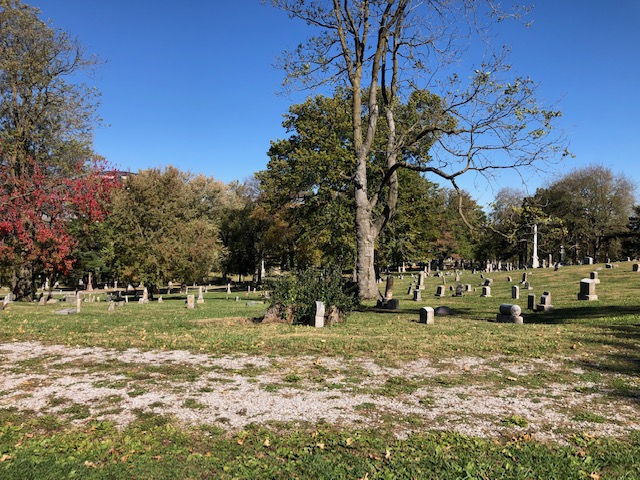
The walking tour starts near the Sexton Cottage, which in a non-Covid world is also a gift shop (I know – weird!) and serves as a Visitor Center. Currently, there are guides for the walking tour in a tray on the outside of the door. There is also some room to park a vehicle near the cottage. I have highlighted just a few of the 40 gravesites on the walking tour.
One of the interesting groupings of headstones is mentioned in the guide near the end. There are four headstones inscribed in Chinese. These are most unusual for the time period, because most Chinese shipped their loved ones back to China to be buried with their ancestors, which if you think about it, would have been quite an ordeal at the time – a trip along the California Trail followed by a lengthy boat ride! We came across another small section of Chinese graves between graves 7 and 8 on the tour.
Some of Kansas City’s most famous folks buried in Union Cemetery include George Caleb Bingham, who was best known as an artist, but was also a soldier in the Union army during the Civil War, and a politician later in life. His most famous painting is probably “Order No. 11” which he painted from 1865-1870 to depict the forced removal of Confederate sympathizers from four counties in western Missouri, including Kansas City’s Jackson County.
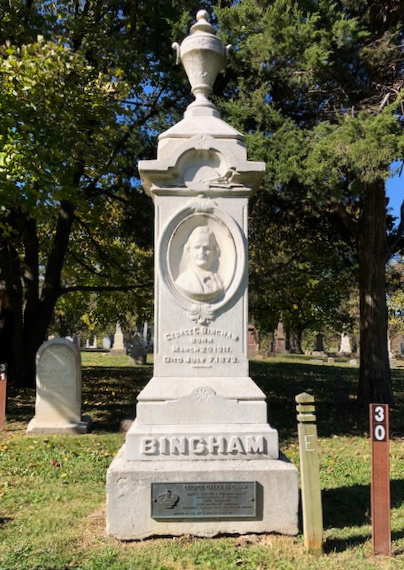
Joseph Boggs served in the Pennsylvania militia during the American Revolutionary War and later moved to Missouri. His grave was relocated to Union Cemetery along with his original headstone. A military style headstone was added later by the Daughters of the American Revolution.
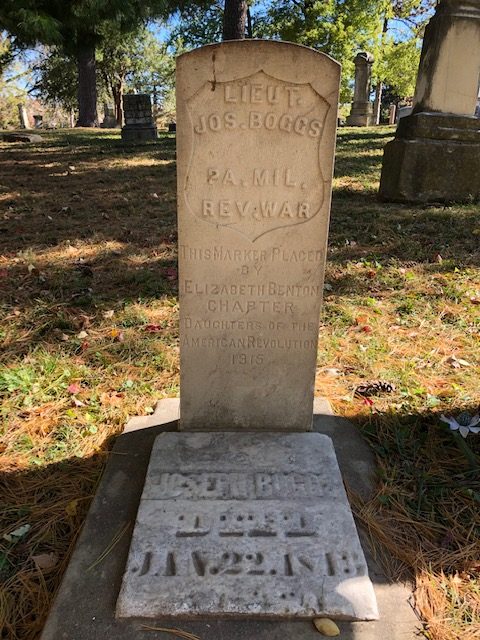
Nathaniel Gwynne was the youngest recipient of the Congressional Medal of Honor. He earned his medal the day after his enlistment when according to the Congressional Medal of Honor Society, “When about entering upon the charge, this soldier, then but 15 years old, was cautioned not to go in, as he had not been mustered. He indignantly protested and participated in the charge, his left arm being crushed by a shell and amputated soon afterward.”
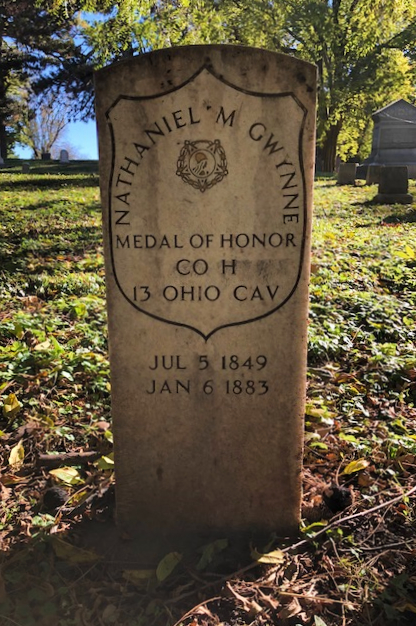
Another famous “resident” you met in destination six, is Alexander Majors. As a cofounder of the Pony Express, an additional monument was placed at his gravesite on the Centennial of its founding.
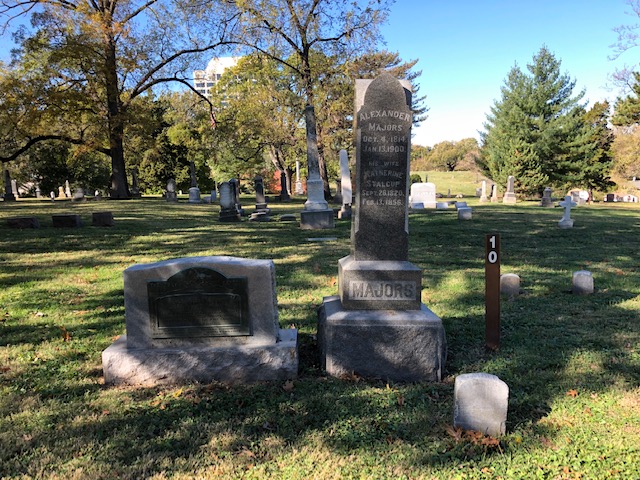
Another famous Kansas Citian buried in the Cemetery is John McCoy. He first came to Missouri as a surveyor, and actually assisted with the land survey for Fort Leavenworth. He also filed for the plat for the town of Kansas (Kansas City) in 1835. He has one of the largest stones in the cemetery.
Elizabeth Duncan Porter, buried in Union Cemetery, is another interesting story. She and her husband were living in what is now Kentucky during the Revolutionary War and were captured by the British.
And finally, M.D. Wood was the jailer in Lawrence, Kansas, who locked himself in the jail cell and refused to come out when Quantrill’s gang raided the town of Lawrence.
FUN FACT: There are soldiers from every war from the Revolutionary War to Vietnam buried in this Cemetery.
All seven of the above locations have Covid-19 precautions in place. If you choose to visit any of the sites, and I hope you will, be aware that Kansas City is currently under a mask mandate, so come prepared for that. And be sure you sample some barbeque and Dixon’s Chili while you are here!
As always, if you enjoyed what you read, please subscribe to be updated when new posts are published. You are also invited to join our new community on Facebook: Tours, Trips & Travel Tips for History Lovers | by Travel the World History. If you enjoy planning your own travel, feel free to register and use my booking engine, or if you are interested in a vacation quote, you can submit your request using this form. And lastly, if you are curious about how I have turned my passion for travel into an income, please reach out here! Thanks for reading!

